Friends of Croatia: UNICEF - Croatia an Example to the World When it Comes to Breastfeeding
May 27, 2021 - The sixth article in the "Friends of Croatia: UNICEF" series explores the work of the UNICEF Office for Croatia. What is done regarding children's rights in Croatia, positives, and negatives, and how can you help if you want to?
To ensure that our world even stays the same, let alone improves, new generations are essential. But, before they grow old enough to participate in society, society must first take care of the youngest ones to grow and develop. Society must ensure for kids that they grow up in families filled with love, make sure that kids can go to school, that they are healthy, safe from violence, that they are not hungry or thirsty, and give them overall opportunity to make it in the world.
Basically, children have rights, and they are in more detail elaborated in 54 articles. For more details, have a look at the Convention on the Rights of the Child that came to power on September 2, 1990, by the United Nations (UN) General Assembly.
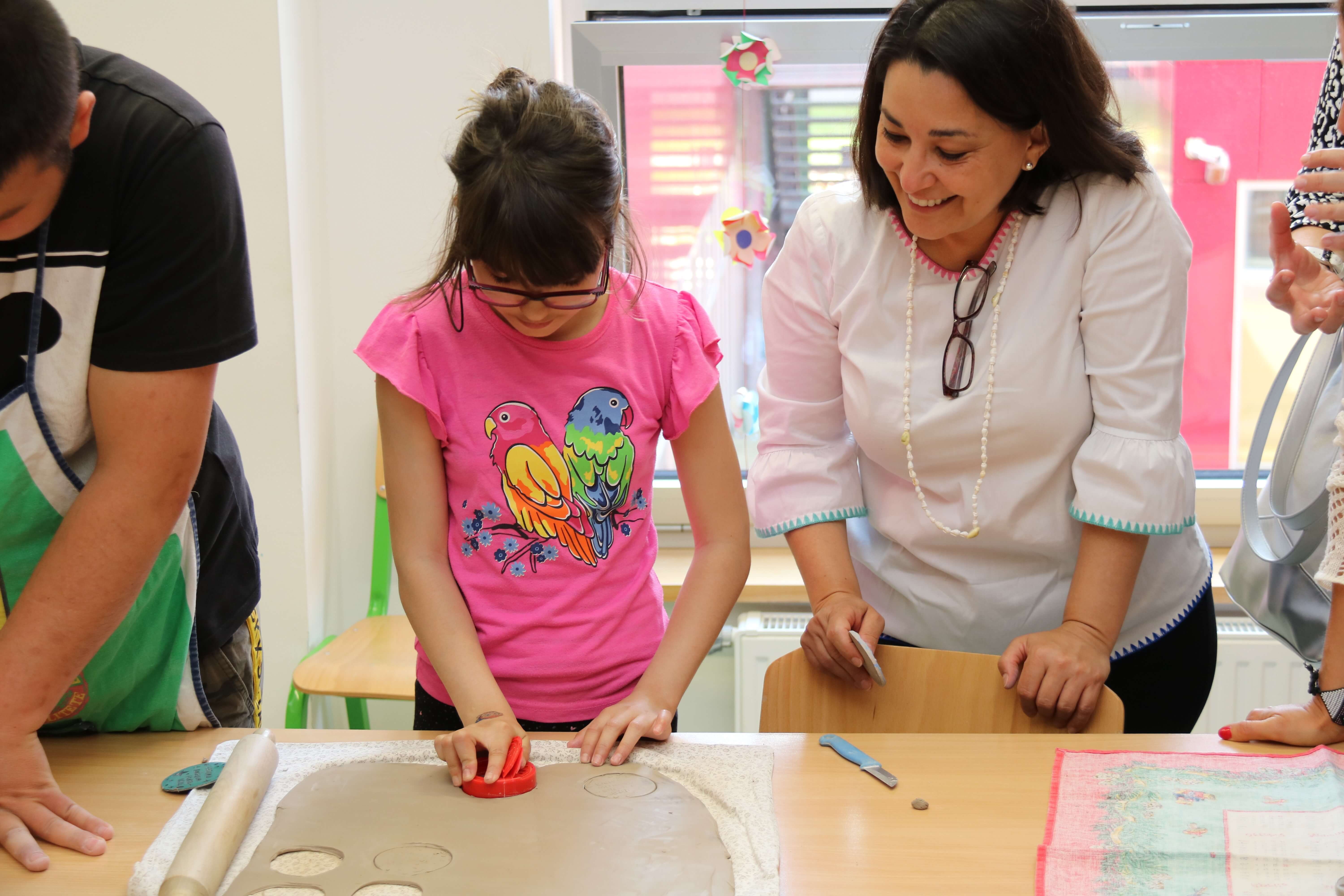
Regina M. Castillo, UNICEF office for Croatia representative with children with disabilities in Centre Tomislav Špoljar in Varaždin © Marin Ilej/UNICEF
The UN is dedicated to seeing this Convention is being respected, and United Nations International Children's Emergency Fund, commonly known as UNICEF, specializes in the issues of children's rights. Established in the aftermath of World War II, UNICEF has been at the frontlines of humanitarian crises, armed conflict, and natural disasters.
„Undeterred by the scale of the crises, we rise to the challenge, reimagine what is possible and respond by helping millions of children survive and thrive. Our on-the-ground expertise has reached more than 191 countries and territories, through committed partnerships and a passion for innovation“, says UNICEF on its official website.
Croatia signed and agreed with the Convention, and UNICEF today has its own office in Zagreb. Furthermore, it's worth noting that UNICEF has existed for 75 years, and despite firstly coming to Croatian territory while the country was part of the former Socialist Federal Republic of Yugoslavia, UNICEF has been with Croatia since the organization was established.
„Many people do not know that UNICEF helped to eradicate malaria in Croatia and that UNICEF played a key role in the development of modern dairy. Dairies were built in Zagreb, Rijeka, and Split, and factories for the production of powder milk in Osijek and Županja. Milk was distributed in schools, and for many children, it was their only meal during the day“, says Regina M. Castillo, UNICEF Office for Croatia representative.
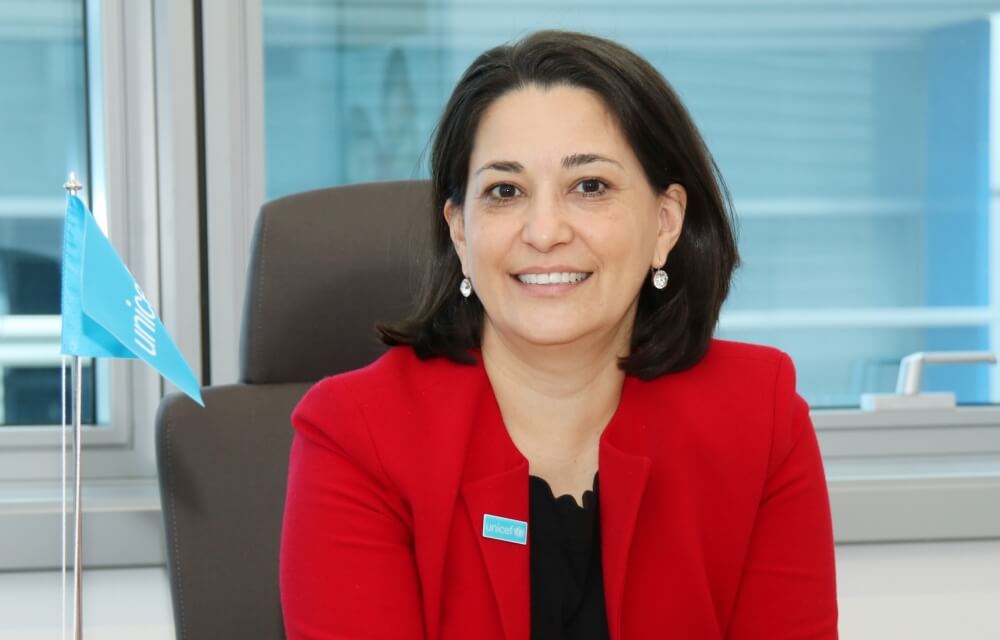
Regina M. Castillo, UNICEF office for Croatia representative © Marin Ilej/UNICEF
The UNICEF representative is elected for a five-year mandate, and Regina M. Castillo came to her function in Croatia in 2019. Her career in the UN started in 2001 and was in charge of economic and social questions in the Executive Office of the UN chief secretary Kofi Annan in New York. This was followed by Castilla moving to work in the mutual program for HIV/AIDS, known as UNAIDS. She was first the director of private sector partnerships in Geneva (2006-2012) and then moved to be the director for Bolivia, Ecuador, and Peru (2012-2015). She majored in International relations and public politics.
Born in Nicaragua, she first started her career in the 1990s as a diplomat, and she was also the headmistress for international trade in the Nicaraguan Trading Ministry.
Helping Croatia before it was cool (or an independent country)
Castillo went on to continue that after World War 2, UNICEF fed six million children every day, which included many children in Croatia.
„One of those children was our dear colleague, prof. Josip Grgurić, who is still working tirelessly for the youngest. He still remembers the yellow cheese that was part of UNICEF's humanitarian package for families, as well as the chocolate that he then tasted for the first time. He later worked at the children's hospital in Klaićeva, which UNICEF helped found, and he still works hard on UNICEF’s Child-Friendly Hospital Initiative“, says Castillo indicating how valuable but also inspiring UNICEF can be to children. Castillo added that in the Homeland War, UNICEF was the first organization on the ground, making sure that children and families received the necessary psychosocial support and humanitarian packages. After the war, they educated children on how to protect themselves from landmines.
Today Croatia developed, joined NATO and EU, and is a modern European country. With such progress, there have been many improvements in respect to children and their rights.
„Croatia has a low mortality rate of children under the age of five, extremely low stunted growth rate due to inadequate nutrition in the first years of life and the enrolment rate of children in primary school is almost 100 per cent“, pointed out Castillo.
„Croatia is an example in the world when it comes to the promotion of breastfeeding. It is rare that all public maternity wards in a country have the status of 'Child-Friendly Hospital'. With the support of UNICEF, partners have organized a network of breastfeeding support groups, and now we have more than 200 support groups in Croatia“, added Castillo on what the world can look up to this small South-Eastern European country.
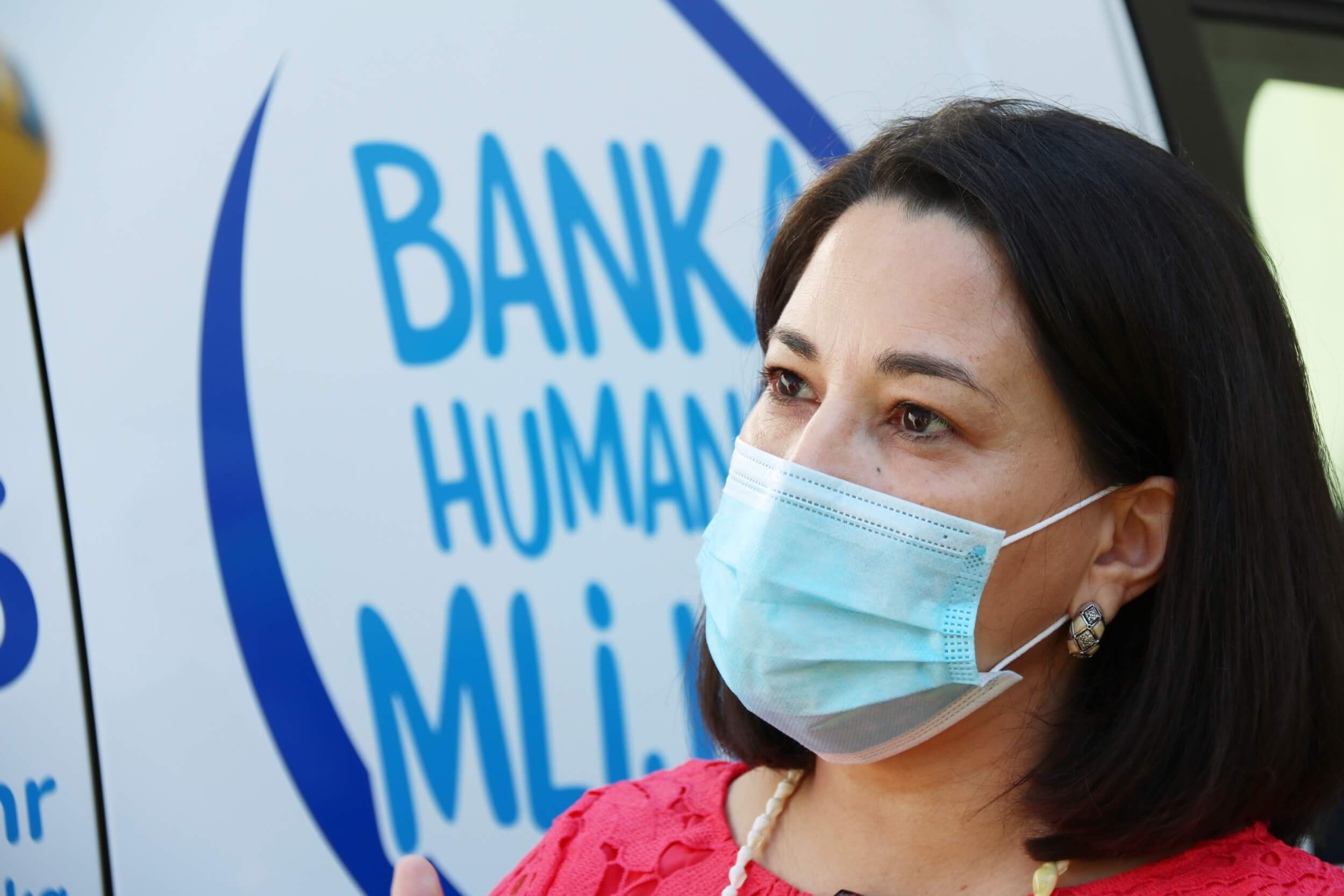
Regina M. Castillo at Human milk bank © Marin Ilej/UNICEF
Still, there are some issues Croatia needs to address and are far from ideal at the moment.
„There are still differences when it comes to access to services for children, depending on where they live and the conditions in which they grow up. Children with disabilities, as well as children from the poorest families, especially in rural areas, often do not have the opportunity to attend kindergarten and do not have the same access to specialized health services and therapies as children in urban areas. The focus of UNICEF in Croatia is on the most marginalized children: children with disabilities or developmental delays, children growing up without adequate parental care, children from minority groups, children at the risk of poverty and exclusion. UNICEF’s programs are focused on the well-being and protection of every child, with a special focus on the most vulnerable children“, pointed out Castillo.
Campaigns and programmes such as “Every child needs a family”, “The first three are the most important”, and “Stop violence among children” are perhaps the most known public action by UNICEF in Croatia, but returning to the good practices of breastfeeding, Castillo emphasizes the establishment of the Human Milk Bank in her current mandate.
„Thanks to the Human Milk Bank, prematurely born and seriously ill newborns (who do not have access to their own mother's milk) can receive milk donated by other mothers. We continually work on reducing the risk of disasters, support the development of quality foster care and provide support to parents in the upbringing and care of children through workshops and we work a lot with young people“, said Castillo.
In general, UNICEF has different types of offices in countries, and regarding the Croatian office, it’s a Country Office. In other words, most of the resources (human and financial) are invested in programs in Croatia. Castillo says that the five-year mandates have priorities that are determined in cooperation with partners. And while 80 percent of the funds raised are invested in programs for girls and boys in Croatia, there are funds and support programs for children outside of the country.
“For example, in 2018, UNICEF supported child health care in parts of Ukraine affected by the conflict and helped the building of five inclusive children's playgrounds in two refugee camps in Jordan in cooperation with the Ministry of Foreign and European Affairs in 2019. Through the ‘Schools for Africa’ program , which includes many kindergartens and schools throughout Croatia, UNICEF supports the education of girls and boys in Madagascar", Castillo listed several examples.
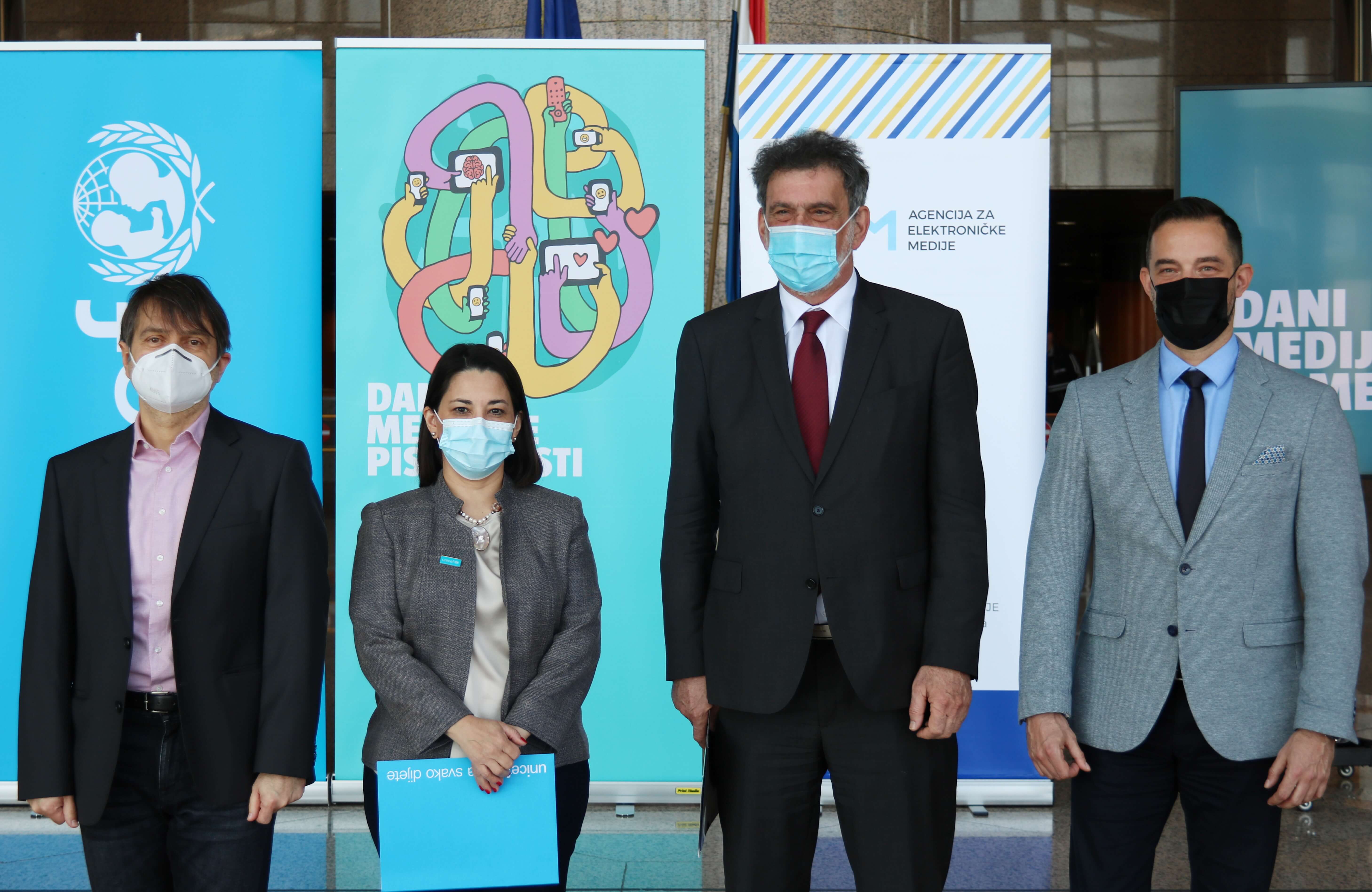
Regina M. Castillo, UNICEF office for Croatia representative with children on Media Literacy days press conference with Radovan Fuchs Minister of Science and Education, Krešimir Partl, State Secretary at Ministry of culture and media and Robert Tomljenović, Deputy Director of the Council for Electronic Media © Marin Ilej/UNICEF
Overall, the UNICEF Office for Croatia works closely with the Croatian Government, and most notably, with the Ministries of Social Welfare, Education, Health, and the Ministry of Foreign and European Affairs. Other partners also include experts (Croatian experts, but also building on expertise and good practice from all over the world), professional associations, academia, services providers, and NGOs.
“UNICEF’s goal is to connect all stakeholders and to advocate and support systemic change for the well-being of all children. System change is a gradual process, and it can be challenging, but when it comes to children’s rights, every step forward is well worth the effort”, explained Castillo.
Croatian citizens showing support for UNICEF
On one hand, Croatia is a good country with low mortality rates of kids and a role model for breastfeeding promotions. On the other hand, however, peer to peer violence (on whose suppression the aforementioned “Stop violence among children“ campaign works heavily on), and unequal approach to education between rural and urban areas show Croatia has both its ups and downs. Unfortunately. The downside sometimes overshadows all the positive things.
One such instance was the tragic death of a two-year-old girl from Nova Gradiška on Easter Sunday. The death of a severely injured girl, who was brought to Zagreb's children's hospital after suffering abuse and heavy beating from her biological parents (and from whom the girl was taken and given to a foster family but was then returned back to biological parents), sparked controversy and citizens outrage, culminating in changes in social welfare law, as well as sacks and investigations in the welfare center in Nova Gradiška.
„We are deeply saddened by the tragic death of two-and-a-half-year-old Nikoll on Easter Sunday. There are no words to express the pain of such a terrible event. Unfortunately, there are no simple and quick solutions to prevent violence against children. For years, UNICEF in Croatia has been continuously and persistently working in the field of child protection, educating experts from the social welfare system, but also other experts who work with children and families, such as experts from the health care, education, and justice systems. UNICEF implements various support programs for parents, and it is fully committed to the development of foster care and the improvement of the legislative framework. However, UNICEF is also aware that society as a whole, has a long way to go to achieve the goal that every girl and every boy is guaranteed the best possible care and protection. UNICEF will continue to work actively, persistently, and dedicatedly with all partners to achieve it”, commented Castillo.

Regina M. Castillo talking on Media Literacy days press conference © Marin Ilej/UNICEF
However, Croatians recognize the importance of the UNICEF mission. Before Covid, UNICEF annually collaborated with the Museum of Illusions on the Museum of Reality exhibition which displayed the problems children faced worldwide, but which also showed what changes and solutions UNICEF brought to those areas.
“Experience tells us that citizens are ready to support the youngest, in Croatia and beyond. Implementation of our programs would not be possible without the support from citizens and companies that placed the focus of their CSR activities precisely on children. We especially value the support from our Childhood Guardians, donors who support our work with regular monthly donations and allow us to regularly conduct our programs for boys and girls, as well as react quickly with much-needed assistance in crisis situations like the earthquakes in Croatia and the COVID-19 pandemic that affected all families. UNICEF is always in the field with the most vulnerable children and their families”, notes Castillo.
In the end is important to note, that while children are recognised as a particularly vulnerable group, all human rights apply equally to children.
“All the rights enshrined in the Convention apply to every child, regardless of a child’s country of origin, gender, religion, and nationality. Every child, by birth, has all his/her rights, the right to grow up in a safe environment, to have a family, to have access to health care and education, to be able to play and develop his/her interests and reach his/her full potential”, concludes Castillo.
The five-year mandate is an agreement that sets priorities in advance, so Castillo warned that there is no opportunity for making donations outside of that framework. UNICEF office occasionally does get messages from citizens who need advice or help on issues outside of that frame, but nevertheless, UNICEF can offer them help by referring them to institutions and addresses that can offer citizens the necessary support, financial support, or information.
With expertise mentioned several times throughout this story as the insurance of delivering the best solutions to issues children face, UNICEF is always on the lookout for new people. If you want to make a change in the world while earning a fair wage yourself, check out what expertise UNICEF is looking for right now.
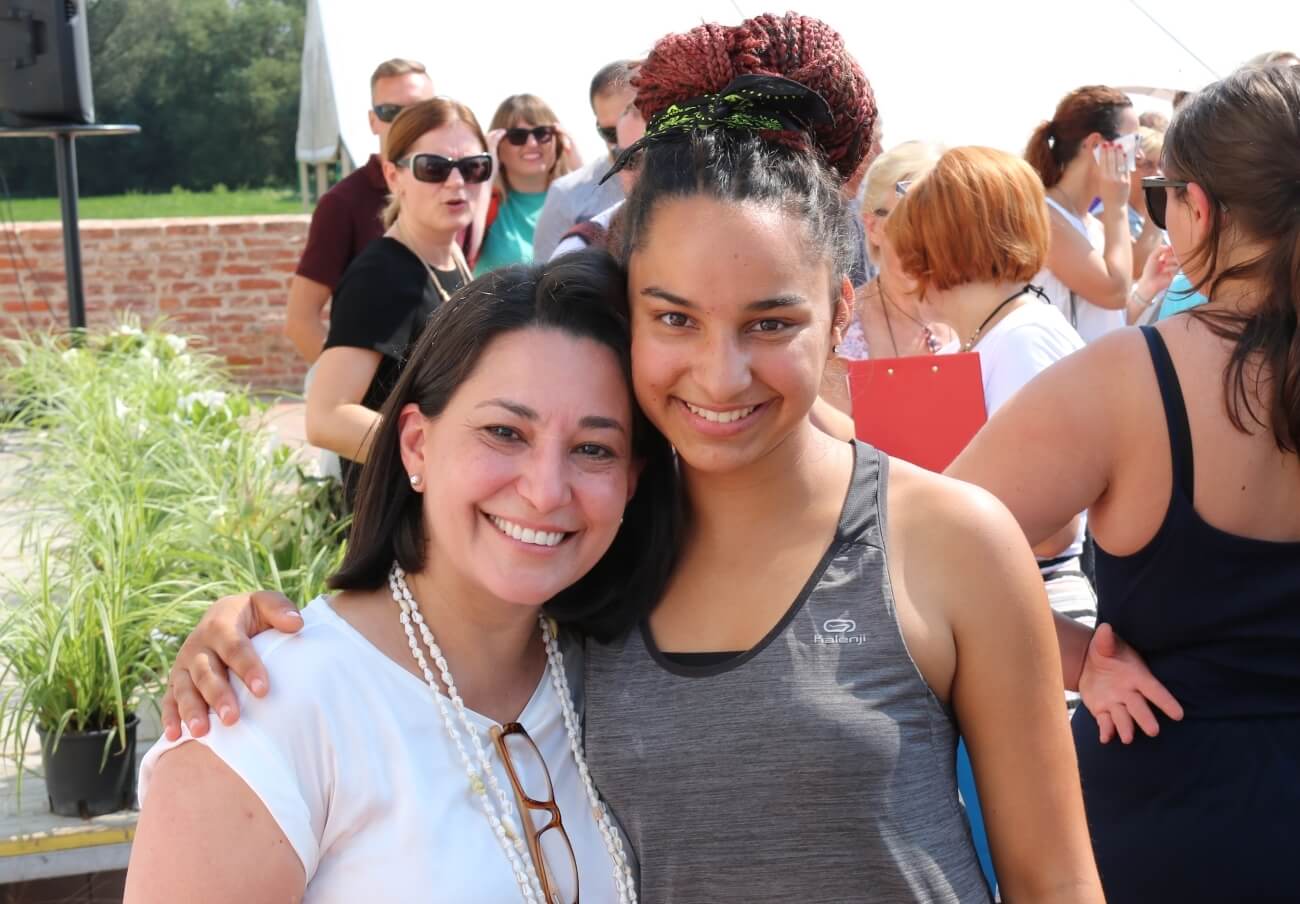
Regina M. Castillo on a foster family gathering © Marin Ilej/UNICEF
UNICEF Croatian Office is situated on Radnička cesta 41/7. To inform the public of their work, they built a considerable presence on Facebook, Twitter, Instagram, Youtube, and Linkedin. You can also find all UNICEF-related info for Croatia on their official website, and contact them via mail: This email address is being protected from spambots. You need JavaScript enabled to view it. or on phone numbers: +385 1 2442 660 and +385 1 2442 661. You can use the website to donate to a cause in Croatia too. Additionally, there are numbers: +385 1 4095 855, +385 99 2692 196, and +385 91 621 1039 for more details on donating to Croatia as well as e-mail address This email address is being protected from spambots. You need JavaScript enabled to view it.. You can also leave a donation to UNICEF in your will, and a phone number +385 1 3031 640 specializes for the issue in Croatia. If you find yourself in Croatia and you want to volunteer for UNICEF, more info can be found by sending a mail to This email address is being protected from spambots. You need JavaScript enabled to view it. and on phone number +385 1 3031 646.
And of course, you can donate for a good cause to UNICEF for any action the fund is internationally involved in.
To read more from the series "Friends of Croatia", follow TCN's dedicated page.
For more about UNICEF in Croatia, follow TCN's dedicated page.
Spanish Party Team in Split: Spanish Youth Tries the Croatian Coast
June 2, 2021 - One TCN intern spoke to three people from different regions in Spain about their expat experience in Split.
Croatia is an easy county to adapt to Spaniards because they don't really need to adapt a lot. The climate is similar on the Mediterranean coast and the culture has a common Catholic base. Meanwhile, it's not the same thing and they value their experience from living in Dalmatia.
My Croatian boss told me about his mate, a Split journalist, who once wrote that the best city in the world was... not Split, but San Sebastian located in the Basque Country, Spain. It represents a flagrant case, but in general, as I can see, many Split citizens have the positive impression of Spain - either through business trips, or holidays there, or the Camino - and wouldn't mind moving there for some period of time. I spoke with my Spanish colleagues in Split who have done the opposite move and asked them to compare their life in Spain and in Croatia. They came from different regions of Spain: Estela (28) is from the north-west region of Galicia, Pablo (24) is from the Saragosa, the capital of the north-east region of Aragon, and Jorge (25) is from the south-east region of Murcia.
Jamon or pršut?
"In the cuisine, there are many similarities because of common ingredients of Mediterranian cuisine," Pablo starts and enumerates some of it as olive oil, cheese, vegetables. Some foodstuff is more popular for one region than for others. For example, a homemade meal in Saragosa usually contains dishes with green beans, while in Split, it's difficult to find fresh green beans to cook with at home. In Galicia, people traditionally eat more liquid food or soups, while Dalmatians prefer solid foods like pašticada. 'Ajvar' sauce from red pepper is popular in the Balkans and would probably never become a part of Spaniards’ nutrition if they had not moved to Croatia.
Some differences in nutrition arise from the geographical circumstances, for instance, seafood is more typical for coastal sides of Spain as well as Croatia. Dorada fish is bigger in Galicia in the cold waters of the Atlantic than in Dalmatia in the Mediterranean Sea. Other distinctions stem mostly from the generational gap and personal circumstances. Young generations try to keep healthy nutrition with less meat and more fish in spite of the geographical region they live in. Estela feels closer to this generation than to the older one that cannot imagine the main dish without meat, either in Spain or in Croatia.
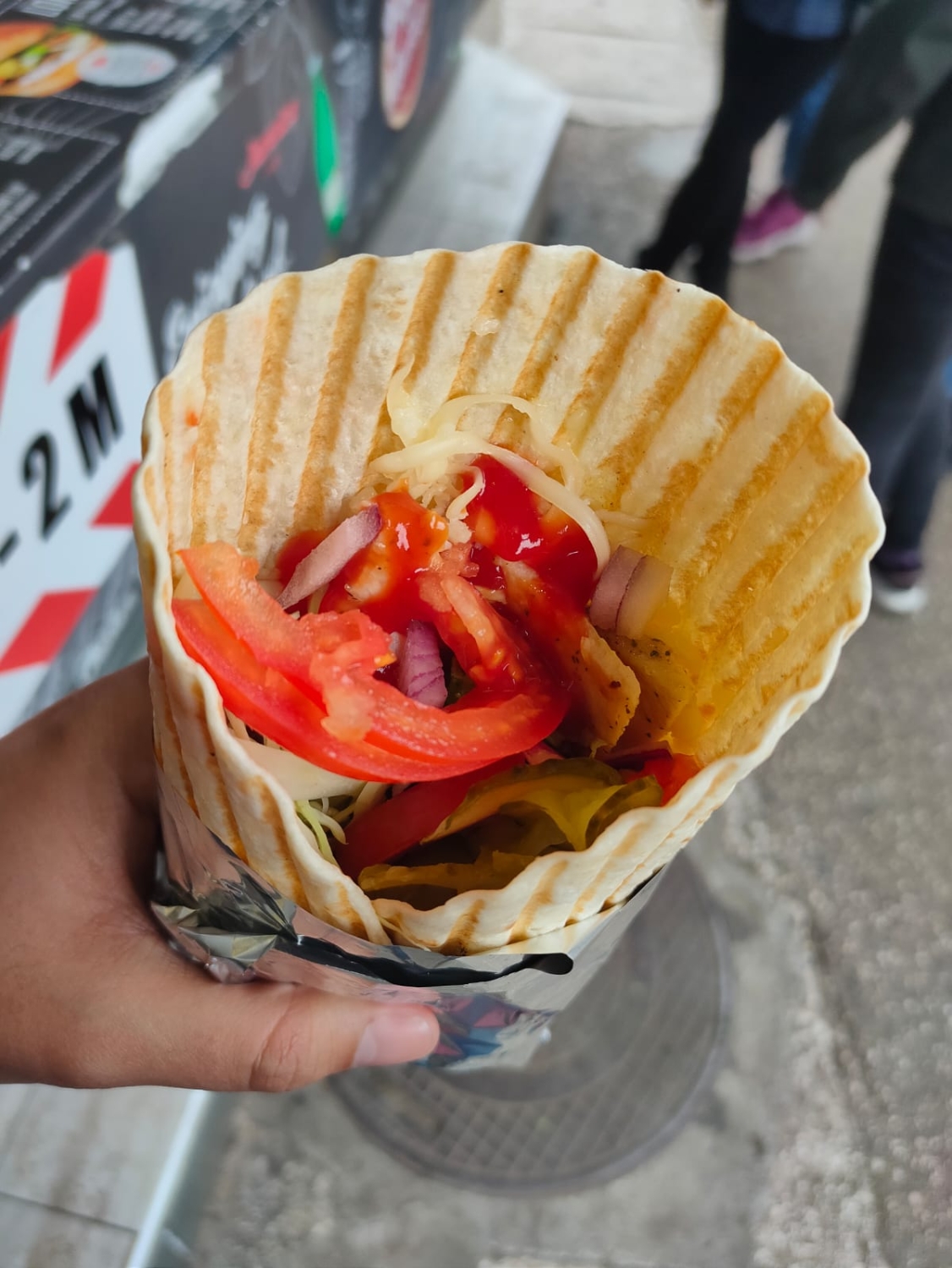
Jorge was surprised by the level of prices in the supermarkets here. It's more or less the same as in Spain, whereas the level of salaries is certainly lower in Croatia. He also misses big chain supermarkets in Croatia like 'Merkadona' in Spain, because it produces some foodstuff under its own brand. Things like 'guacamole' or 'hummus' have a good quality there. However, in Split, there are a lot of products imported from Spain, like 'Lidl' supermarkets with its 'Spanish week', etc. Maybe, you won't find some small local brands of cheese or beer that you're used to in Spain, but you will find an adequate substitution. Looking closer, ‘pršut' is similar to 'jamon', 'kulen' is similar to 'chorizo’, and the like.
Coffee or beer?
Choosing between coffee and beer depends on the time and day schedule for Spaniards. They feel more streamlined in this matter. Breakfast should be before you go to work. A lunch is between 2:00 and 3:00 pm, and dinner is served between 9:00 and 10:00 pm. "In Croatia, people eat when they want!" Pablo and Estela wonder. "Here, people drink more coffee", Estela continues. In Spain, it's normal to have coffee first with your breakfast, to drink one more in the afternoon, and perhaps to have one more coffee after lunch. People usually drink their last coffee at lunchtime, but not at 8:00 pm as people do in Split. Of course, there are some people in Spain who have to work in the evening or have other reasons to drink coffee so late, but most Spaniards prefer beer in the evening.
The culture around having coffee or beer in some public places does not differentiate much. You can enjoy one cup of coffee in a cafe for hours if you're not in a hurry. You can drink coffee quickly and go to work as well. It's typical to have a beer in the evening as people usually finish work, but it's ok to have it even at 1:00 pm as you've already finished your business. Coffee in cafes is a little more expensive than in Spain. Prices for beer in Split bar are also higher, as Jorge and Pablo guess. Estela makes adjustments. A mug of beer is bigger here, and accordingly, the price is higher. In sum, we have more or less the same level of prices in Croatia and in Spain. Also, Split is the second-largest city in Croatia and a tourist city, namely the ‘Croatian Barcelona’. Certainly, in the historic center of Barcelona, a glass of beer costs more money than in some towns in Galicia.
The variety of coffee is broader in Spain. For example, 'cortado' most likely won’t be found in any cafe in Split. Spaniards agree that the quality of coffee is good. Meanwhile, they prefer coffee from the machine or an Italian drip kettle. "Turkish coffee is kind of disgusting to everybody who gets used to Italian coffee," Jorge supposes. A beer in Croatia is less strong than in Spain, however as mentioned, a normal glass or a bottle is 0,5 l instead of 0,33 l. You get less alcohol with a bigger amount. At will, you can get the same thing in Spain. There, if a beer is too strong, people dilute it with sparkling water or lemon juice. In Croatia, nobody does that. But Croatians often dilute wine with sparkling water or ice that seems weird to Spaniards. "If wine is really bad, we do 'sangria' or 'calimontxo' (namely Croatian 'bambus') from it. If wine is good, we never mix it. People would ask why?!” Estela explains to me.
Inside or outside?
Estela and Pablo arrived in Split in late November 2020, a week before the second anti-Covid lockdown. Jorge came in March 2021, a week after cafes and terraces started to re-open after winter quarantine. One might think that Jorge was luckier to come later, but in fact, the Covid restrictions were stronger in Spain than in Croatia. In any case, their experience in leisure time had objective limits because of the Covid-19 pandemic. It's difficult to compare entertainment in your home town and in Split, they say because they haven't seen that touristic crowded loud Split as it was before the quarantine. However, nobody really suffered from the lack of activities here.
Pablo says that when you come for a year, you're more concentrated on the communication with new people you meet here. He was not striving to go to a gym or wherever for any organised leisure time. "I'm not bored now. If I lived here for a longer period of time and had a routine every day, I would probably try. I mean there are some museums, etc." Pablo speculates. Indeed, in this sphere of communication, we were lucky in Split. There are some typical public places for drinking in the afternoon or evening time in every town of Spain, but this kind of social activity is prohibited and the police usually come. Otherwise, Matejuška pier situated on the edge of the Split Riva is open 24h and rarely visited by the police. You can go there almost any time to drink in a company and meet amazing people from all over the world.
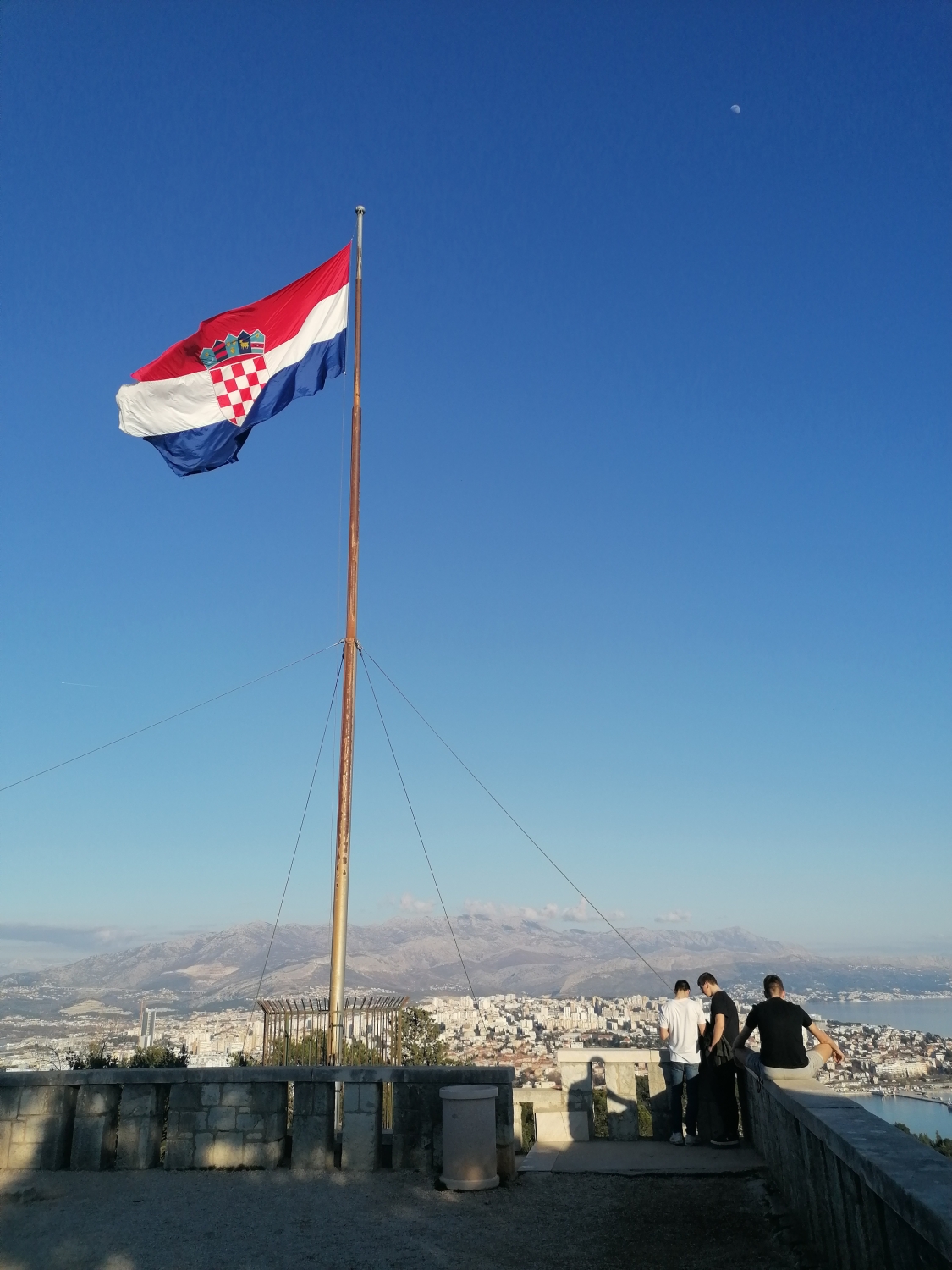
We met people on Matejuška even on the coldest evenings in winter. As a whole, there are fewer activities during the winter and more in summer. Leisure time options in Split are similar to Ferrol, Estela says. As well she prefers to spend leisure time outside. You can go hiking in the mountains or swimming in the sea - fortunately, both options are close to the city. If you fancy it, it doesn't take much time to come by foot to some beautiful nature place in the surrounding area. Split is situated on the hills, nevertheless, the Riva promenade is straight enough for roller-skating and skateboarding. With her friend, Estela found a good place for skating behind the ferry port of Split. Besides roller skates, she also took a slackline and was pleasantly surprised to find another group of slackliners in the city park Sustipan.
They went once to the cinema and theater. In the cinema, it was an American movie - an original version with Croatian subtitles. The fact that cinemas usually show original versions is for sure appreciated by Spaniards. In Spain, movies are mostly dubbed, thus foreigners have little chance to understand the plot. What is even more pleasant, as Estela's local friend shared with her, the summer cinema on Bačvice beach will be showed with double - Croatian and English - subtitles, so foreigners will have all the options.
To speak or not to speak?
My Spanish colleagues as well as I came to Croatia through an international program that affected our community. Almost from the first month, we joined the Facebook group 'Expats meet Split' and it also affected the international diversity of our social circle. Estela speculates: "If I had an ordinary work here, in a public school, for example, perhaps I would have more Croatian friends, and it would be easier to do at the workplace". But anyway, she considers Croats are very open to communication and their way of socialising similar to Spaniards. Croatians are open to suggestions to have coffee together, to go to the beach, to drink a beer in a bar.
Pablo has a more skeptical view of making friends with Croatians. He agrees that Croatians are open people, however, his experience of watching football in the company of Croats suggests that he needed to speak Croatian to have a true Croatian friend. They are nice, they invite you to watch a match together, but finally, they start speaking Croatian to each other and you're out of it, Pablo explains. Estela objects to him. "People of our generation, they speak good English. Of course, if you're in a big company, it'd be better to speak Croatian. If you're in a small company or one-on-one, you would not have problems socialising. You can communicate, speak, explain..."

Learning Croatian is a challenge for people from Spain. The grammar is complicated. There is just a little intersection with Latin, therefore you need to learn totally new vocabulary. There are some words without vocals ('krv' blood, 'prst' finger, etc.) which is difficult to spell, some words with sounds missing in the Spanish language which is also difficult to spell ('ljubav' love, 'izviđači' scouts). Some usual words in Croatian sound funny to Spaniards, because it sounds similar to obscene words (‘koliko puta..." how many times...). Certainly, it would take years to learn Croatian properly. So far, my Spanish colleagues in Split speak mostly English and use a dozen of Croatian phrases on occasion.
Spanish people are everywhere. If you want to find them, you'll find them. However, my Spanish colleagues don't really try to find their countrymen. Jorge shies away from the Erasmus students' society that is kinda well-staffed by Spanish students in the University of Split. Pablo's first preference was an international party, but now he doesn't care whether he will join an international or Spanish party the next evening. Estela said that she tried to avoid Spanish society. "If they start talking with me, of course, I talk... If we are in a big company, I try to move to an international circle... I have enough Spanish friends in Spain."
Pomalo or even more pomalo
As we seek to describe the culture of a region by one word, we likely use 'pomalo' for Dalmatia. In the Dalmatian dialect it means 'take it easy', 'relax', 'slow down', 'put it off until tomorrow, 'we will do it tomorrow, 'we can do it tomorrow... or later'. The Spanish word 'mañana' (tomorrow) has quite a similar context to it. In Europe, these concepts are traditionally associated with southern sloths and laziness. "Europe has a stereotype of us that we are really pomalo, but here there's even more pomalo," Estela shares her impression. Pablo echos her: "Here everybody is so relaxed. It doesn't matter whether you come on Monday morning, or Tuesday morning, the Riva is full of people. And these people are not only tourists!" It looks like nobody works in this city!
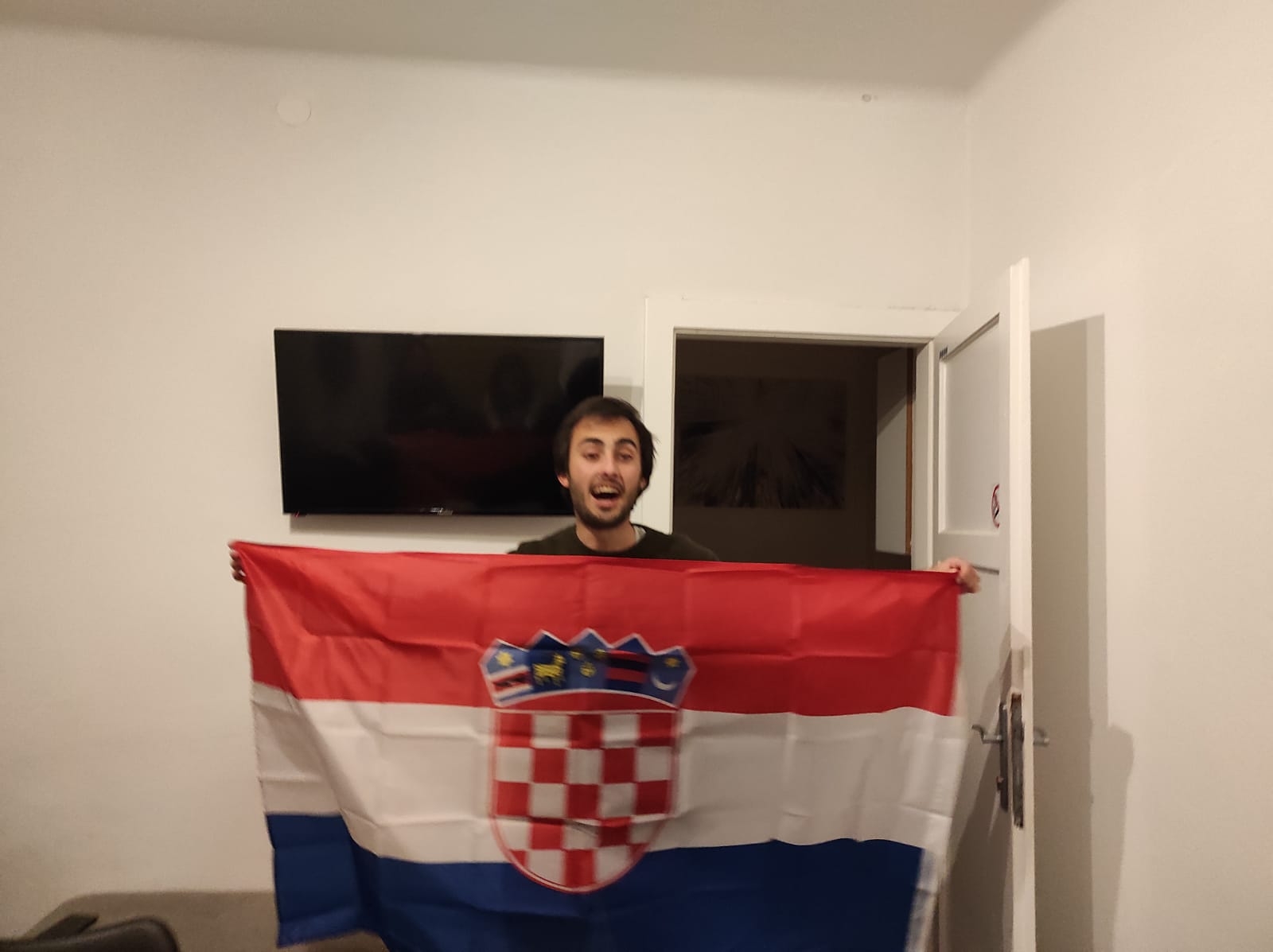
Joking aside, some manifestations of this pomalo mentality at times frustrates my Spanish team. Estela chooses her words to be merciful with our lovely Dalmatia - flexible, not disorganised. Notwithstanding, she would like to see fewer last-minute moves and more long-term plans. Maybe, slowly, but it should come to its objective. The illustrative example is local services. Croatian Post works really slow. Sending something from Spain takes about a month, but in the end, reaches the consignee. One of the bottles was broken, but when they contacted the Croatian Post service, they promised to manage it. Meanwhile, postcards that Estela's mom had sent her via post never came to Split.
Another story has happened with my colleagues during the use of the 'e-bike' service in Split. They bought an annual Croatia subscription in Zadar and should not be charged more. But the bike company began to charge them more for rentals in Split. After e-mailing, the Spanish expats learned that Split (a big tourist city, for economical reasons) and Jastrebarsko (a small town, for a random reason) are excluded from the whole-country subscription. The company returned the money and they changed the subscription to Split only. So, services work, although slowly, whereas you should make contacts and push them, and remind them, but finally, a responsible person helps you, and you get a result. So, you can manage. But, it'd be better to feel more secure from the beginning, wouldn't it?
For more about lifestyle in Croatia, follow TCN's dedicated page.
Members of Parliament Hope For Revival of Capital Market
ZAGREB, 26 May, 2021 - Amendments to the Capital Market Act, which are aimed at further aligning Croatia's regulatory framework with the EU acquis, were supported on Wednesday by both the Opposition and the ruling majority in the parliament, who expressed hopes for the revival of the capital market.
This is one of the most complicated laws that summarises what kind of capital market Europe wants, said Social Democrat MP Boris Lalovac, warning that Croatia's capital market was far less developed than the European.
"The value of the capital market in Croatia is HRK 276 billion, 140 billion are stocks and 130 billion securities, the annual turnover of the Zagreb Stock Exchange is around HRK 3 billion while the turnover on the OTC market is HRK 27 billion," Lalovac said.
That shows that outside of the stock exchange and capital markets, which have strict rules, trading is ten times greater, Lalovac said, expressing hope this would change.
Grozdana Perić of the HDZ said that better oversight and regulation would enable further development of the capital market in Croatia.
She warned, however, that the coronavirus crisis had caused an outflow of funds from investment funds and that their value had dropped by more than 35% or HRK 8 billion.
That is one of the reasons for amending the law, said the State Secretary at the Finance Ministry, Stjepan Čuraj, who presented the amendments to MPs.
"If we take as an example the Zagreb Stock Exchange alone, during the pandemic in 2020 it dropped by more than 35%, from 2,000 to 1,300 basis points," Čuraj said, noting that there was room for improvement.
For more about politics in Croatia, follow TCN's dedicated page.
Tomislav Tomašević: War Veterans Programmes Won't be Halted, City Offices to be Merged
ZAGREB, 26 May, 2021 - Zagreb mayoral candidate Tomislav Tomašević said on Wednesday it was not true that city programmes for war veterans would be halted once his We Can! party came to power but that rather city offices would be merged to improve coordination of city programmes.
"As regards accusations that programmes intended for war veterans would stop if we come to power, I can say that that is not true. I have said on more than one occasion that we will merge offices, I was not speaking about the cancellation of programmes, because I do not know of any other capital city in the world that has 27 departments," Tomašević told a news conference.
On being given police protection
Asked by reporters if he had been given police protection, Tomašević told reporters to ask police about that because security assessment was not what he and his colleagues did.
"We have been in touch with police regarding security risks. But the police are the ones to make decisions on the matter, and I cannot speak on their bahalf about that," Tomašević said.
Asked about the Otvoreno political programme on Croatian Television of Tuesday, in which he faced off against his rival in the 30 May runoff for Zagreb mayor, Miroslav Škoro of the Homeland Movement, and if he would sue him for false claims, Tomašević said that he was focused on his campaign now.
"That did not happen only yesterday. We are talking about an unbelievable misrepresentation of facts, someone is accusing you of covert campaign financing while at the same time they report zero donations," said Tomašević.
He noted that the internet was full of paid advertisements with false information on the We Can! platform and his family.
He added that Željka Markić of the In the Name of the Family civil society group yesterday made one more slanderous claim against him, saying that he had a gross salary of HRK 25,000 in a nongovernmental organisation.
"She should say which NGO she was referring to and when it happened," he said, noting that an unprecedented hate-mongering campaign was under way on the political scene in Croatia.
For more about politics in Croatia, follow TCN's dedicated page.
Croatia Registers 538 New Coronavirus Cases, 21 Deaths
ZAGREB, 26 May, 2021 - In the past 24 hours, Croatia has registered 538 new coronavirus cases and 21 related deaths, the national COVID-19 response team reported on Wednesday.
That number is a little higher than yesterday, when there were 323 new cases and 21 deaths.
There are currently 3,112 active cases in the country and 1,034 hospitalised patients, 102 of whom are on ventilators.
Since 25 February 2020, when the first case of the novel coronavirus was detected in the country, there have been 354,921 registered cases of the contagion and 7,971 fatalities.
A total of 343,838 people have recovered, 424 of them in the past 24 hours.
There are currently 12,360 people in self-isolation.
A total of 1,988,226 people have been tested for COVID-19, including 6,830 in the past 24 hours.
As at 25 May, 1,608,291 doses of COVID-19 vaccines have been administered, with 1,197,164 people having received at least one dose and 411,127 having received both shots.
For more about COVID-19 in Croatia, follow TCN's dedicated page.
In Love With the Frozen Moment: Meet Tonka Lokas From Šibenik
May 28, 2021 - Sometimes, the best way to learn, discover or connect with a Croatian city is through photography. And not just with drones, but also from a more humane and honest point of view. A great example is through the eyes and lens of Tonka Lokas, a talented and promising 23-year-old photographer from Šibenik.
Sometimes I wish I could brag about a past where, as a child, I discovered through a game or a hobby something that would eventually develop into a passion or professional interest. This is the case of many painters who began by scribbling on the walls, singers who won first places in school competitions, or novelists who wrote letters to their college sweethearts. But that wasn’t my case.
In an unsafe city, I grew up within four walls for protection. Don't get me wrong, all my childhood memories were fond and I constantly look back to make sure of it. How? Surely the box full of photographs that are at my parent’s house plays an important role there. Photography, in general. But you will see later that I am not the best one to explain why.
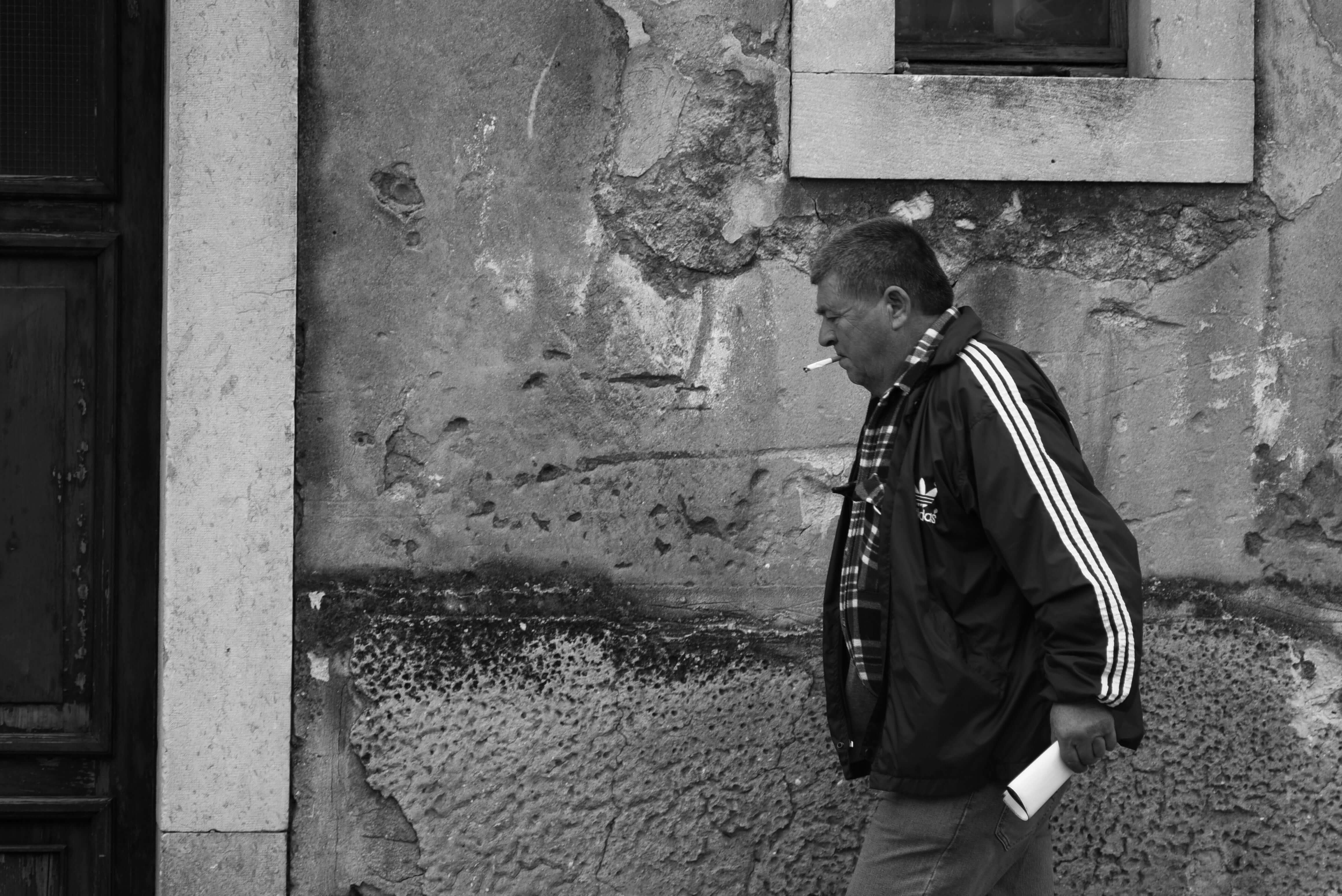
I say this because I believe that being in contact, from a very young age, with everything that surrounds you and moves, is stimulating. See how people interact in the street, how the other children play in the park, listen to what a couple of old men are talking on a bench, wander through the market stands on a Sunday morning... a lot to deconstruct in our little heads. But again, that wasn’t my case.
I’ve been living in Croatia for less than two years, and photography has helped me connect with a country that I am still trying to decipher and get to know better. And like me, every day I saw dozens of tourists or foreign students walking through the streets of Rijeka, Split, and Zagreb with a camera under their arms, capturing moments, people, expressions, scenes... it helps us to interpret what is around us, and later it facilitates the communication process with those we love.

But I also thought that it would be incredible to be able to learn more about a country or a city through the eyes of a person who grew up next to that place. And that’s the story of Tonka Lokas, from Šibenik.
A few months ago, I decided to share my photos on my Instagram account. I did not generate the impact that I expected, but I felt curious about learning more from the people who started following me. Especially those based in Croatia, hoping that through their pictures I could learn more about this country and maybe find some inspiration. And that’s how I discovered Tonka Lokas, a 23-year-old nurse, born and raised in the historical Dalmatian city of Šibenik, and her unique way of observing her city through a lens.

Tonka Lokas, from Šibenik
I immediately felt captivated with her photographs, since it is exactly the perspective with which I like to observe what happens in the street every day. It is true that on many occasions we involuntarily criticize everything that doesn’t suit our artistic preferences, but I think that as far as sitting and reflecting if a photograph is good or not, I prefer to think that each one of them serves a purpose. Even if that purpose is to get more likes.
And it is that, in recent years, most of the photographs that I see about Croatia are those taken from the point of view of a bird with a drone. And that’s fine! But it’s just one way to see it. I felt, honestly, that people were ignored. And this is not just in Croatia, but I believe it’s happening all around the world. Tourism? Sure. That’s the purpose, of course. There's so much to enjoy and discover through our own eyesight. Let’s never forget about the richness of the human factor within the culture. In this particular case, I saw a purpose to tell certain stories that we tend to ignore or pay no attention to when we walk from one place to another in our town or city.
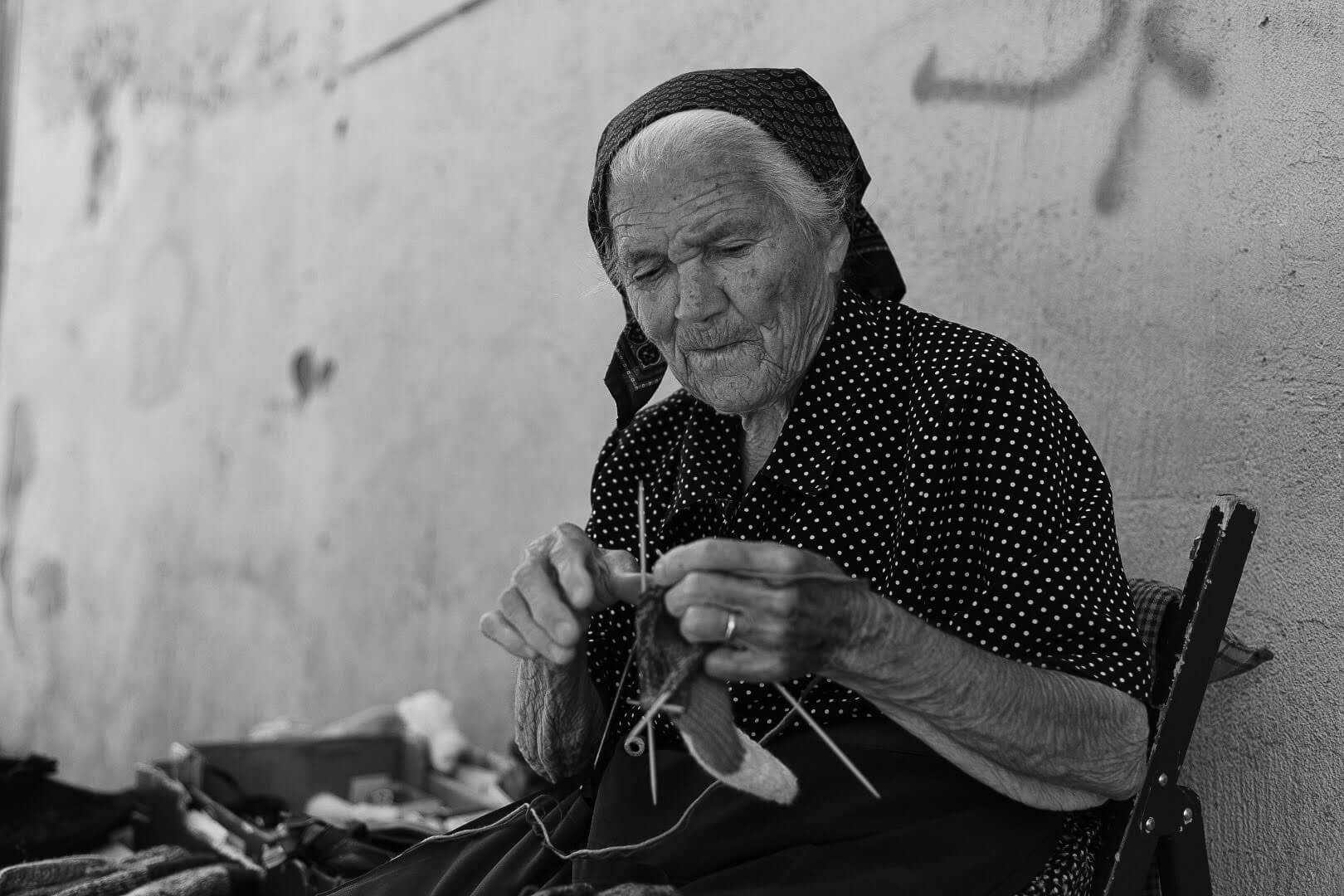
I was pleased to meet a different set of eyes. Ones that observed humanity, emotions, stories, relationships… Almost as if the photographs were taken with them, with each blink. A personal observation through the ancient streets of Šibenik, those that Tonka has been walking since she was very little and that now she photographs with her camera. It seemed to me like an incredible opportunity to learn more about her amazing life story and the city of Šibenik through her words, but especially, through her lens.

Tonka lives in a little apartment with her boyfriend Božo, their baby girl named Marica, and many, many cacti, which in fact she loves a lot. I was surprised to learn that Tonka did not study or is currently studying photography, as I had initially thought. Instead, she graduated from medical school, majoring as a nurse. However, photography has indeed been part of her life as she grew up.
What memories do you have from your childhood? Is there any connection between it and your photography? Are they any photographers in your family?
My childhood was filled with games and fun, especially because of the international children’s festival that takes place in my city every year. I discovered photography while attending one of the festival's workshops. My family had a little digital Sony camera and I always played with it. That workshop helped me to learn how to use the camera properly, at least as much as I managed to learn at the age of 10. And so began the love of the frozen moment. There were no professional photographers in my family, but my uncle was our family photographer and because of him we have a lot of childhood pictures.
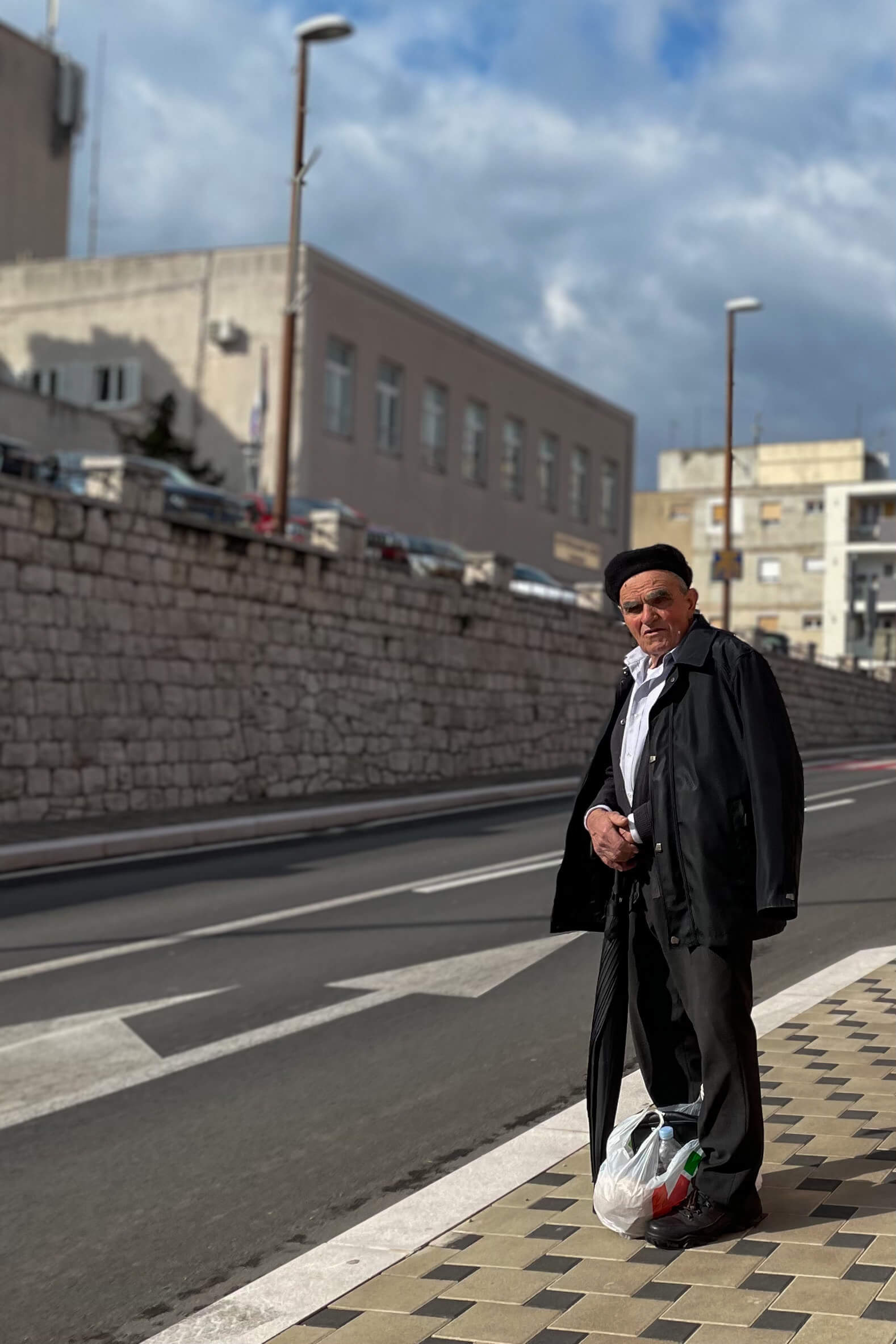
Are you studying, or did you study photography?
I am not studying photography, but I plan to go to Zagreb for a photography course this fall, so I will see what opportunities will open up for me after that.
When did you first realize that photography was your passion?
I think I became aware of that in high school because that’s when I got a little Lumix camera from an old photographer. Exploring all the buttons and settings made me happy and I learned something new every day. I was constantly annoying my friends by taking their pictures, but I have to thank them for putting up with all my ideas and supporting me in the beginning.
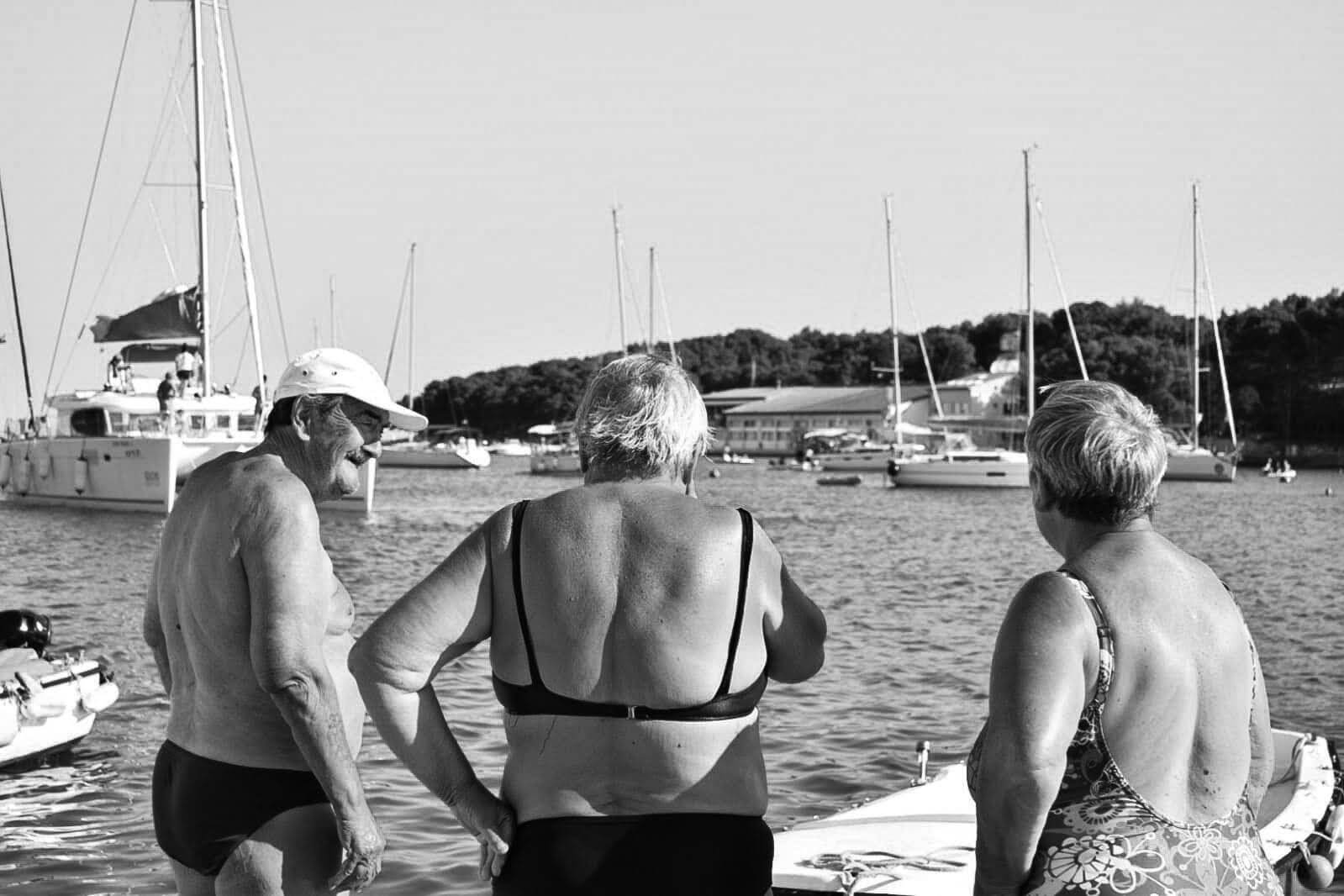
It is well said that photographers are artists just like a painter, an actor, or a composer. But why did you choose photography? How does it help you express what you see and feel?
Art is something that makes us alive. For me, any expression of thoughts and feelings is art. As a child, I loved to look at photos and ask my parents to tell me what happened and what they talked about on the day it was taken. The background story of the photo is still my main concern/topic while talking about photography.

How would you describe your photos? What are you trying to tell the world through them?
My first solo exhibition was called ”Notice”. I could even say that this title is my motto in photography. I want to show people what they miss while staring at cell phones or walk with their heads down. I want to convey the emotion of people who know how to be both happy and sad but are equally beautiful. Every person has a different smile, wrinkles, worries... Every person tells their story, although I don't know the life stories of all these people, I like to imagine myself and I give that freedom to everyone who looks at my photos. You don't have to be a child to be able to fantasize.
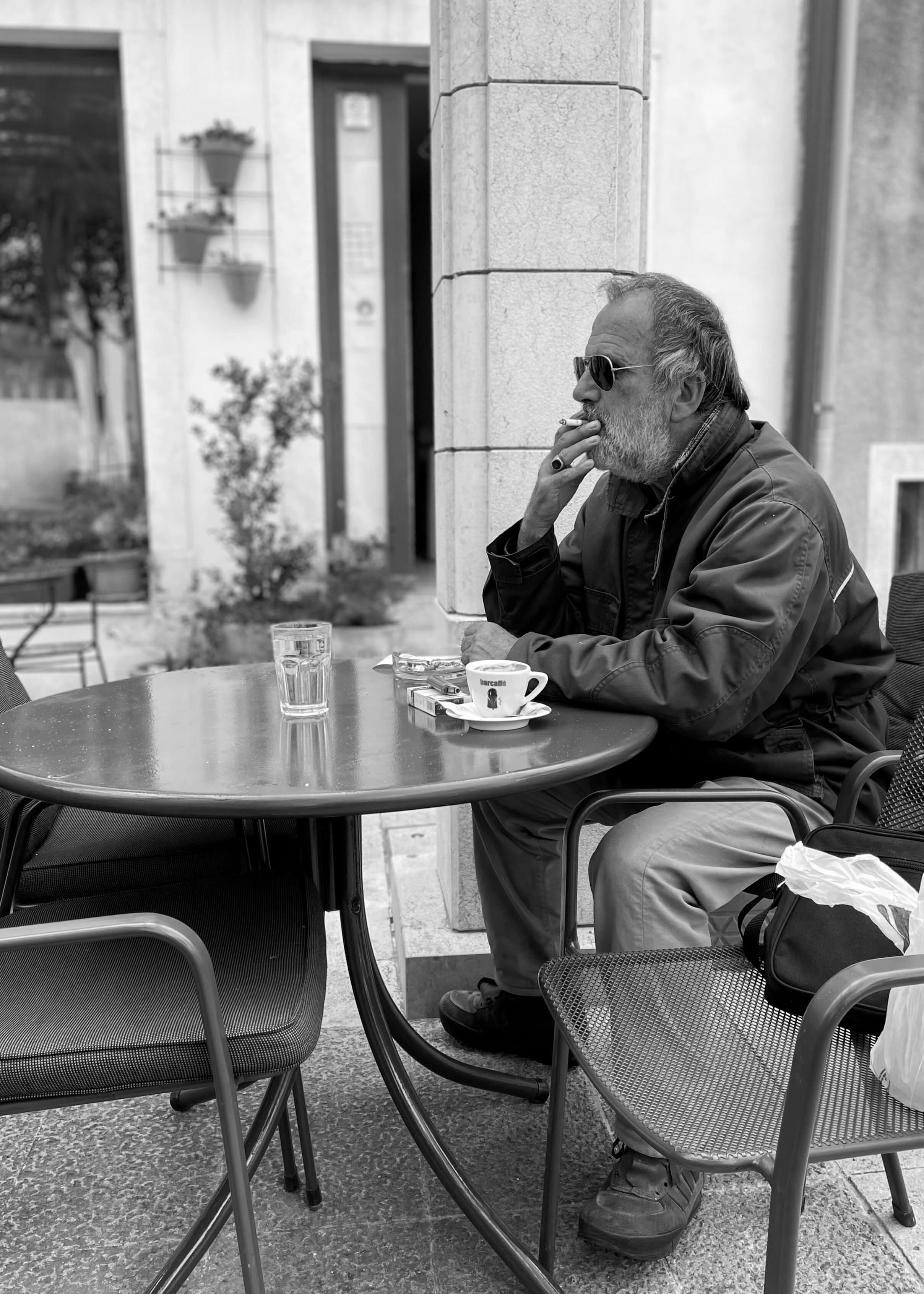
Most photographers that are from, and those who come to Croatia, see it as the ideal place for landscape pictures, sunsets, drone photography… but you seem to be more interested in people. How come?
Croatia is a beautiful country and it sure does get photographed a lot nowadays. I don't mind seeing other people's photos of nature, sunsets, landscapes... but when I find myself in nature I enjoy it as intended, without a camera. Ok, occasionally I capture a sunset or two.
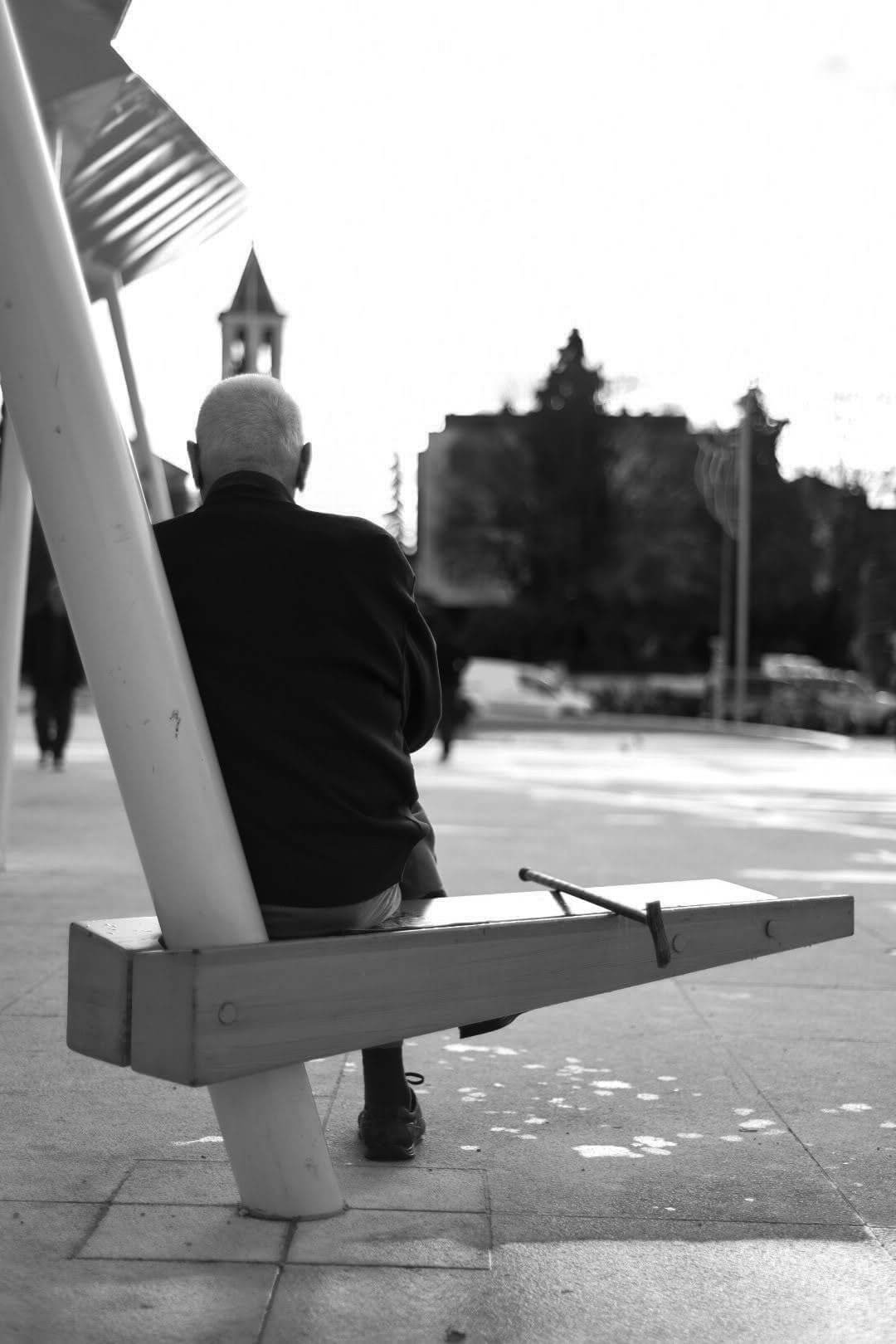
Your pictures are mostly from Šibenik. What makes it different from other Croatian cities?
Šibenik is my small town, full of great and creative people and artists. I know it's every stone and street and I love it's every single corner. I grew up there and I plan to stay there.
''Every person tells their story, although I don't know the life stories of all these people, I like to imagine myself and I give that freedom to everyone who looks at my photos. You don't have to be a child to be able to fantasize''.
- Tonka Lokas
Being a photographer, where do you see yourself in 10 years? Would you like to work as an independent photographer, work for a magazine, agency…?
In 10 years from now? I dream of having a space dedicated to teaching young people and children about photography and doing workshops. I'm afraid that true photography fades slightly due to technology and high-end cameras on mobile phones. It's all great, don't get me wrong, but we take it as given, and I like to see it as something more. That's what I'd like to show to those younger generations; a love of cameras and developed photographs.
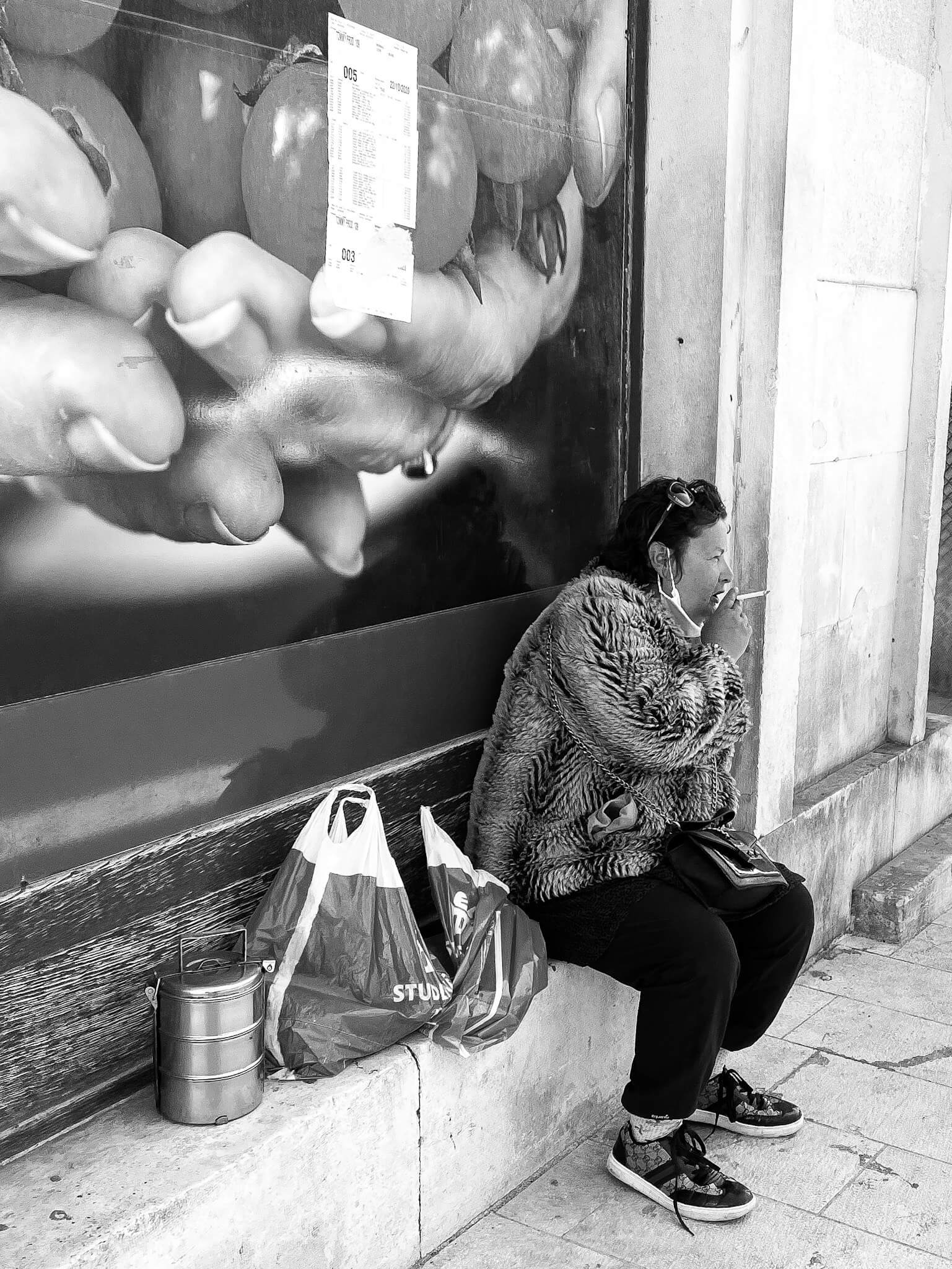
Nowadays, we see that most pictures shared through social media stand out for their bright and saturated colors. Why are you choosing the black and white format?
For me, black and white photography has a soul. And it all revolves around the imagination and emotion I want to convey. Talking about street photography, where everything is full of colors, we can say it's difficult for photo viewers to dig the emotion I experienced taking that photo. People are easily attracted to color, and maybe I’m just in love with a colorless world where we’re all equal.

How is a day in your life? Do you prepare yourself exclusively to take photos when going out? Or do you wear your camera as an accessory and it happens spontaneously?
I always carry a camera on my shoulder. I stop in one place, look around and catch spontaneity in people. We are most honest when we do not know that someone is taking our picture.
Who are your main photography references?
I strongly rely on a feeling while taking photos, so I can't say I look up to anyone in particular. But some of my favorite photographers are Bruce Gilden, Lee Friedlander, and Diana Arbus.
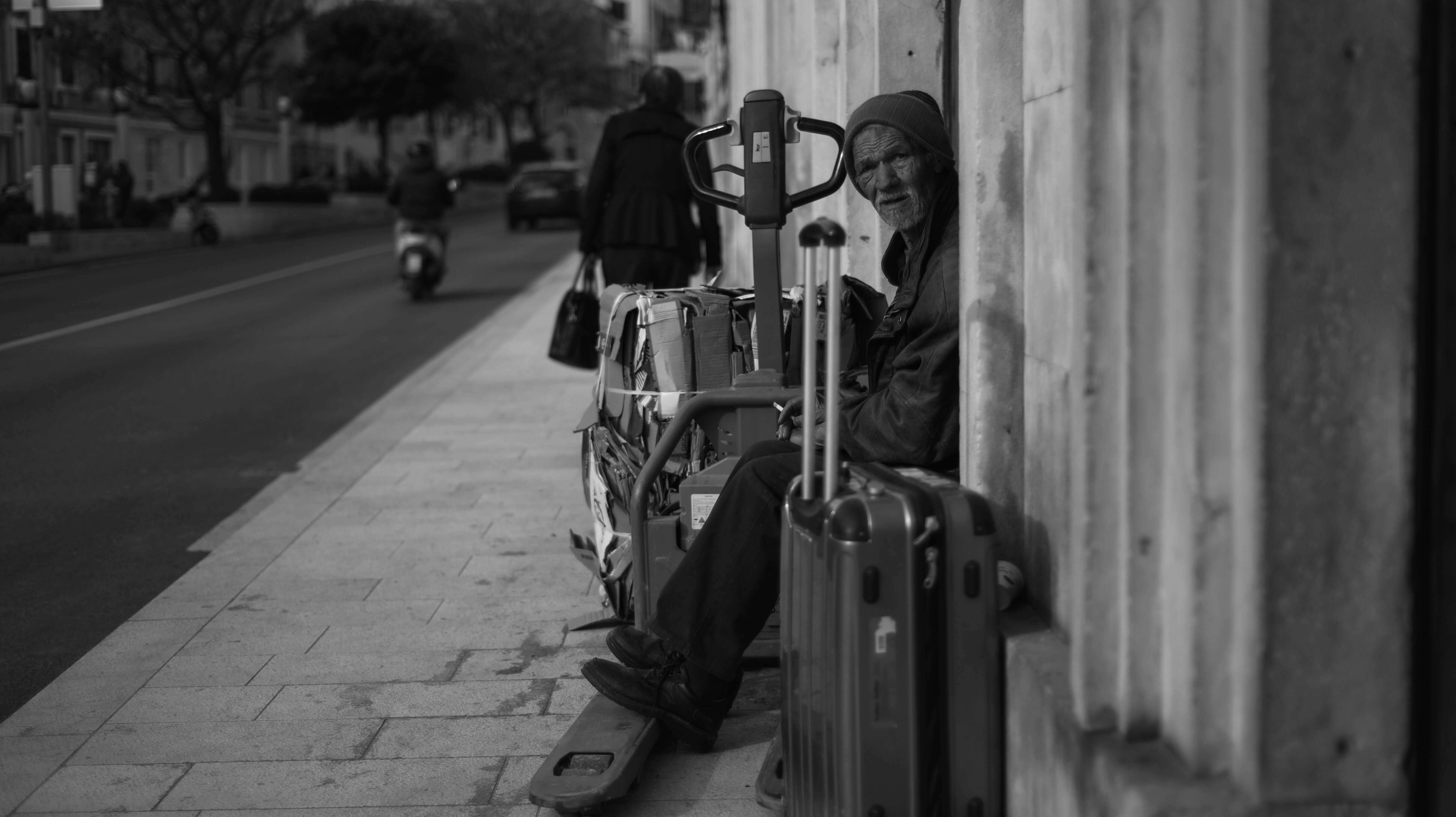
What are your short-term plans as a Croatian photographer? Are you currently working on a project? Are you planning on traveling?
My next plan is to realize an exhibition that I have been thinking of for quite some time. And of course, to learn, work and thrive in the photographic world. I love to travel, but because of the Covid situation, we all have to be a little more patient.
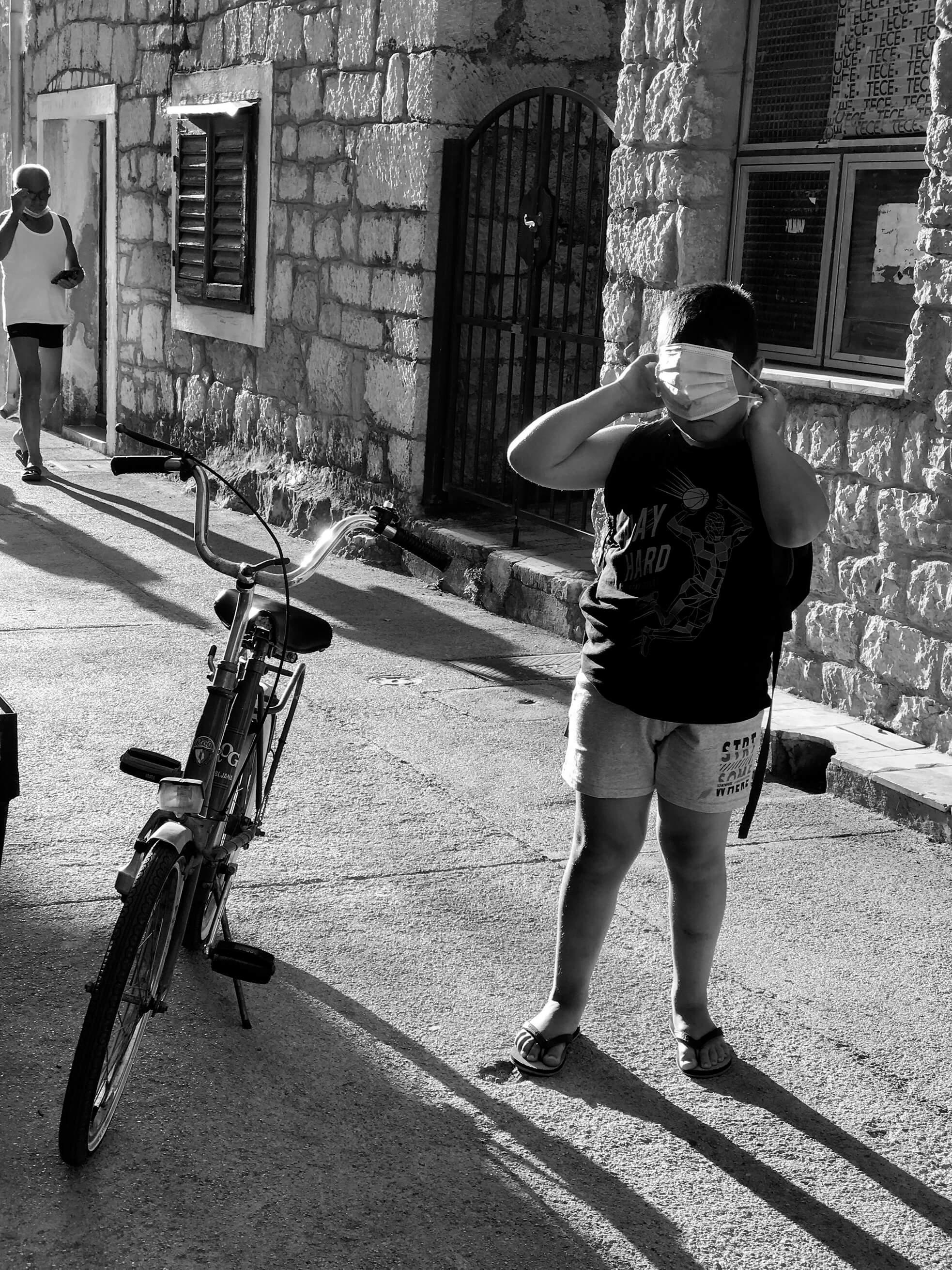
Besides photography, how would you describe your life in Croatia? What else do you like to do?
Life in Croatia is beautiful and relaxed. As young people, we have a lot of options to travel. My boyfriend and I travel a lot. Lately, it's mostly around Croatia, let's say once a month. Our goal is to visit as many islands as possible and of course the entire Dalmatian coast. We are Dalmatians and winter is not very dear to us, so we haven't started touring eastern Croatia yet.
I work as an emergency ambulance nurse and I love my job very much. As hard as the job is, at the end of the day it’s nice to know you’ve helped someone!
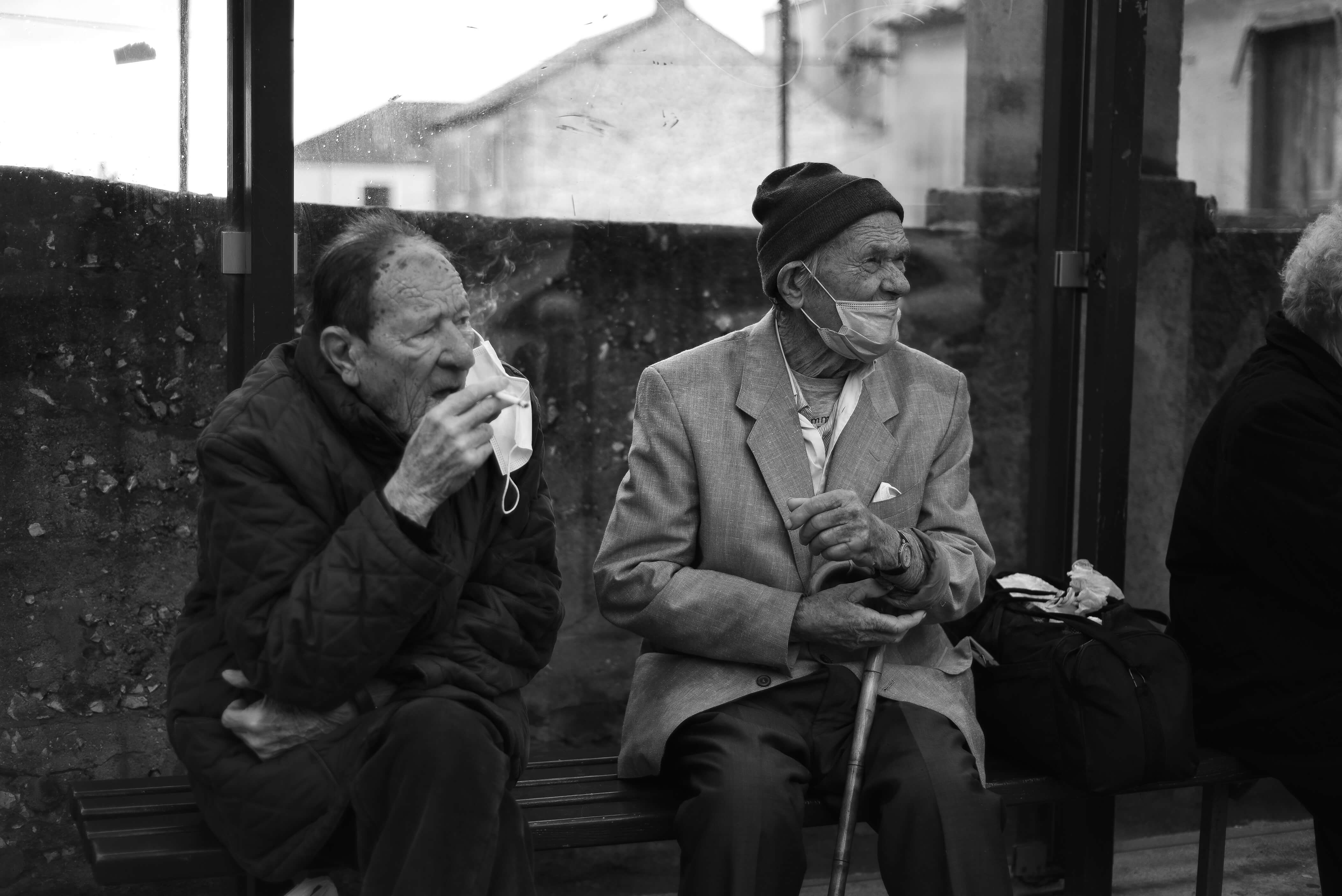
I believe that photographers like Tonka Lokas are living proof that documentary photography or street photography can still tell us thousands of stories every day in a city. I could not count the times that I have made excuses to believe that it is impossible: I do not have the camera I need, I should buy more lenses, due to the pandemic I do not know what photos I could take, maybe this city is not interesting enough... but the Images of this young photographer from Sibenik revive an inspiring phrase that I often hear from time to time: ''If you want to be a better photographer, stand in front of more interesting stuff''. Sometimes that's all it takes: paying attention.
If you want to see and learn more about Tonka’s amazing photography work and upcoming projects, you can do so by following her on her Instagram account.
You can learn more about what Šibenik can offer you on your next trip in Total Croatia’s Šibenik on a page, HERE. Total Croatia’s articles are now available in your language!
For more on art and culture in Croatia, follow TCN's dedicated lifestyle page.
Pelješac Interactive Map with Cycling and Hiking Routes Available
May 26, 2021 - As part of an effort to strengthen adventure tourism on the peninsula, a Pelješac interactive map is available with five circular mountain biking routes and six hiking routes.
As stated by turistickeprice.hr, tourist communities from Pelješac united at the end of last year to develop tourist products of Pelješac. Specifically, they approached the development of outdoor offers through hiking, cycling, and windsurfing, and five thematic festivals are planned in which visitors would enjoy the flavors of Pelješac, traditional dishes, and the well-known Pelješac wine.
As part of the development of the Outdoor Program, an interactive map of mountain cycling and hiking routes in Pelješac was made. There are currently five circular mountain cycling and six hiking routes on the map. Additional route extensions are planned, as well as the addition of catering facilities and wineries to the map so that guests can easily find their way around the area and get to know the complete offer of Pelješac. Pelješac is rich in wineries and traditional taverns and restaurants, so the combination of outdoors and traditional flavors is quite natural.
On the map, you can see information about the difficulty of the route, the type of surface, description, photos and you can download the GPX track that can be used in various mobile applications and smartwatches. There is also a link to the OsmAnd mobile app on the map, as a suggestion. Otherwise, the app is free to download and works offline.
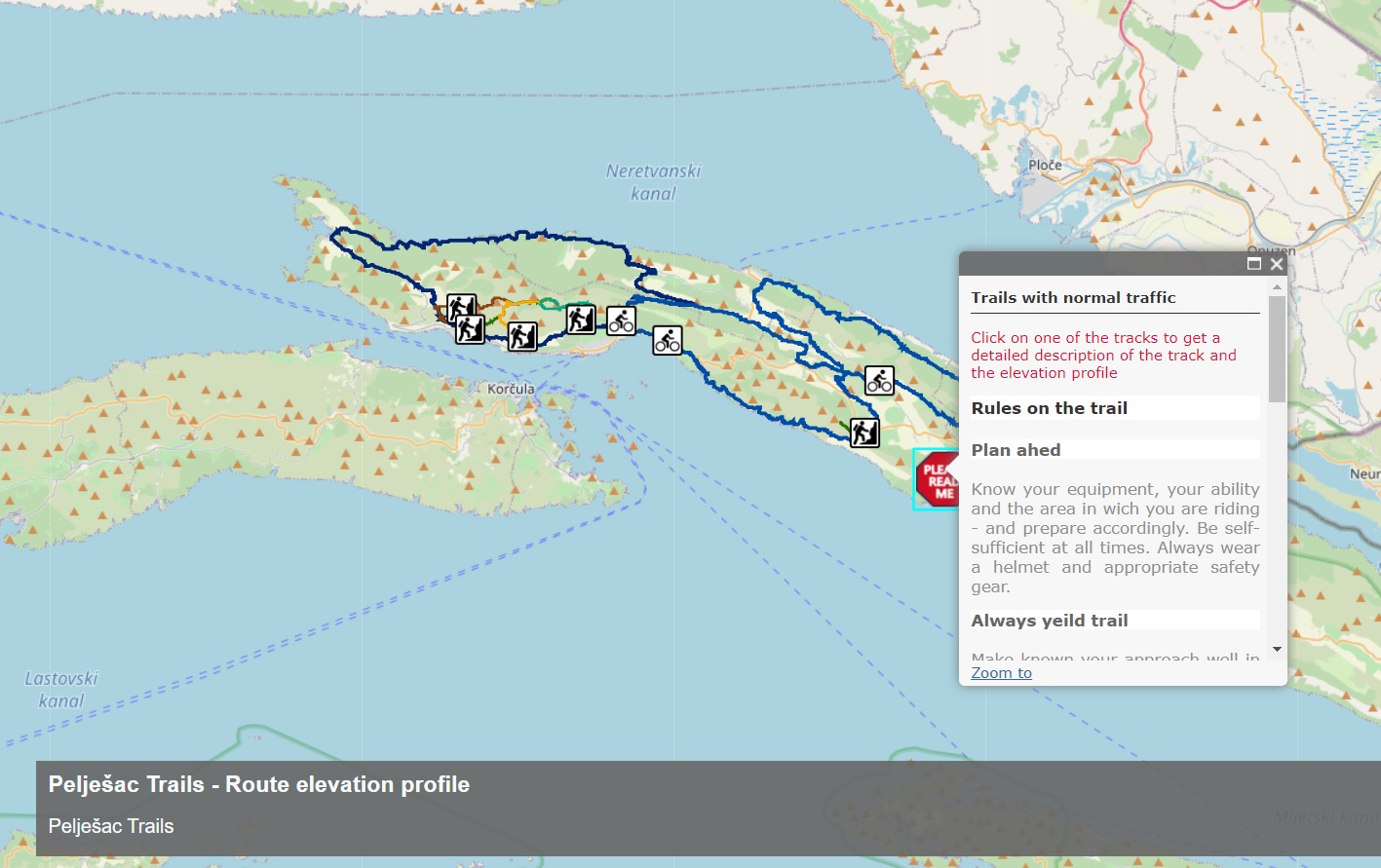
Pelješac Interactive Map with Cycling and Hiking Trails (Screenshot)
The map shows a total of five mountain bike circular routes with a length of 184 km and six hiking routes with a total length of 39 km. The Tourist Boards of Ston, Janjina, Trpanj, and Orebić note that they have developed an interactive map that cyclists and mountaineers can study without coming to the info center, or looking at the websites of tourist boards. In addition, the trails were made in collaboration with local cyclists who know the terrain best, and thus end-users will be able to discover the most interesting parts of Peljesac, which hides many natural beauties.
You can find the English version of the interactive map of Pelješac HERE, and the Croatian version HERE.
You can learn everything about what the Pelješac peninsula can offer you on your next trip, in Total Croatia’s Pelješac peninsula on a page, HERE. Total Croatia’s articles are now available in your language!
For more information about cycling in Croatia, go to Total Croatia's dedicated page.
For more on travel in Croatia, follow TCN's dedicated page.
Sveti Rok MTB Tour by Heart of Velebit Celebrates 5 Years of Cycling
May 26, 2021 - This weekend is surely a special one for the heart of Velebit. The Sveti Rok MTB Tour bicycle competition through the fields of Lika and the area of Velebit around Cnropac will celebrate five successful years of organization with several races, exhibitions, and a Matej Meštrović concert.
As reported by turistickeprice.hr, Sveti Rok MTB Tour is the name of the traditional, fifth in a row bicycle race through the fields of Lika and the area of Velebit around Crnopac, Tulovi Gredi and Zira. This is the first activity this year out of a total of seven that will be held under the common name ‘‘Srce Velebit’’, or ‘‘Heart of Velebit’’. Every day, as part of the Sveti Rok MTB Tour, three cycling or cycling-hiking tours with guides from the Heart of Velebit will be offered. One of them will be an easier, family route through the Lika fields, while two will be more demanding on Velebit.
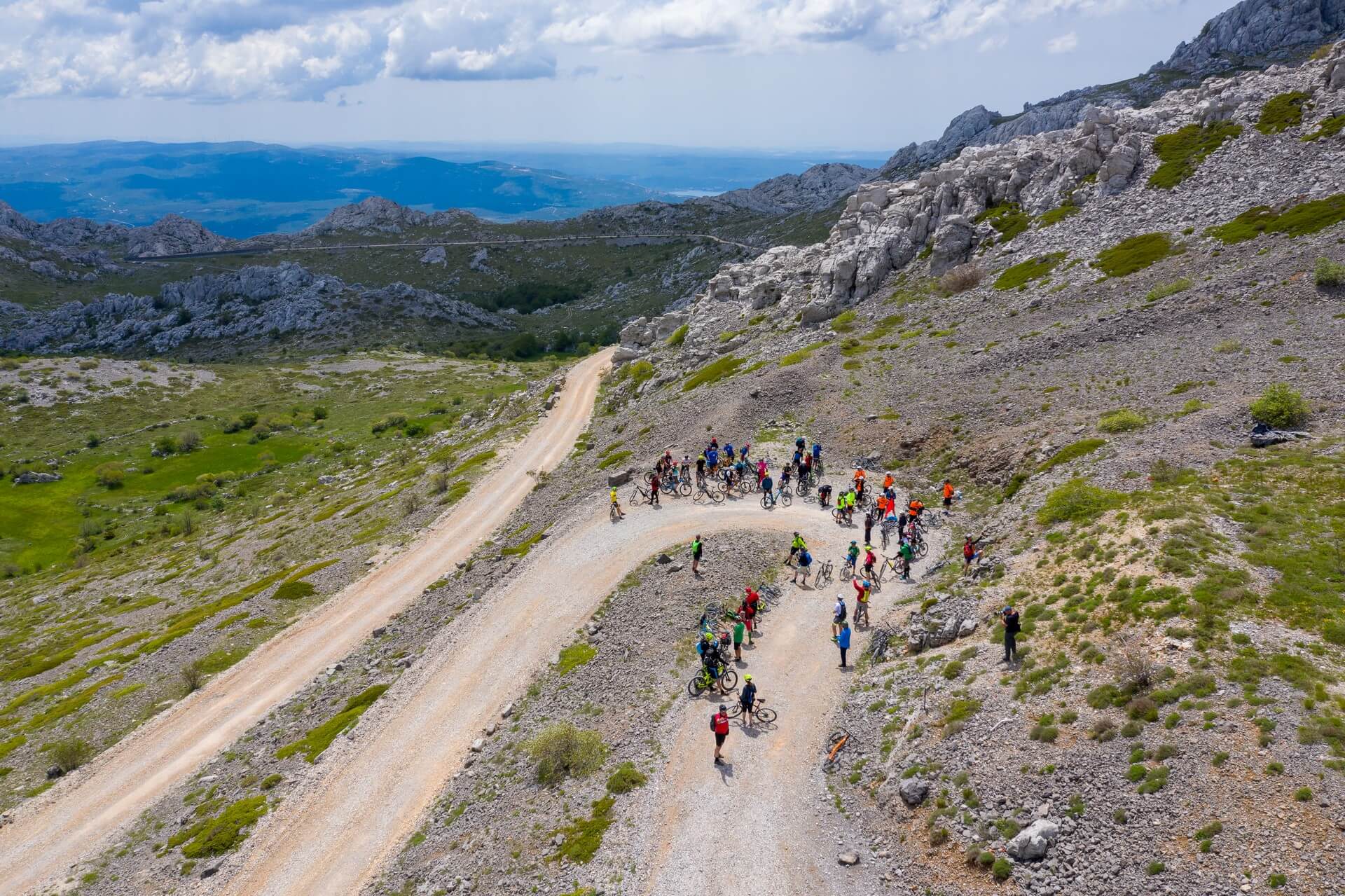
Credit: Heart of Velebit
On the first day of the cycling race, on May 28, the new bike & hike Staza Malog Princa (Trail of the Little Prince) will be presented. It is intended for the most prepared, and this very difficult trail is covered by 40 kilometers by bicycle, and participants will then have another four hours of walking on very demanding terrain. Due to the complexity of the terrain and the safety of the participants, the number is limited to 30 participants.
For participants with less driving experience on difficult terrains, a light route, Suvajski bunari (Suvajski wells), with a length of about 35 kilometers with an altitude difference of 350 meters has been prepared. The third route offered on the first day of the cycling race is the Velebit šišmiši (Velebit bats), and it is a night bike ride through Velebit for participants with previous experience and equipment for night driving, who should expect 25 kilometers of forest roads.
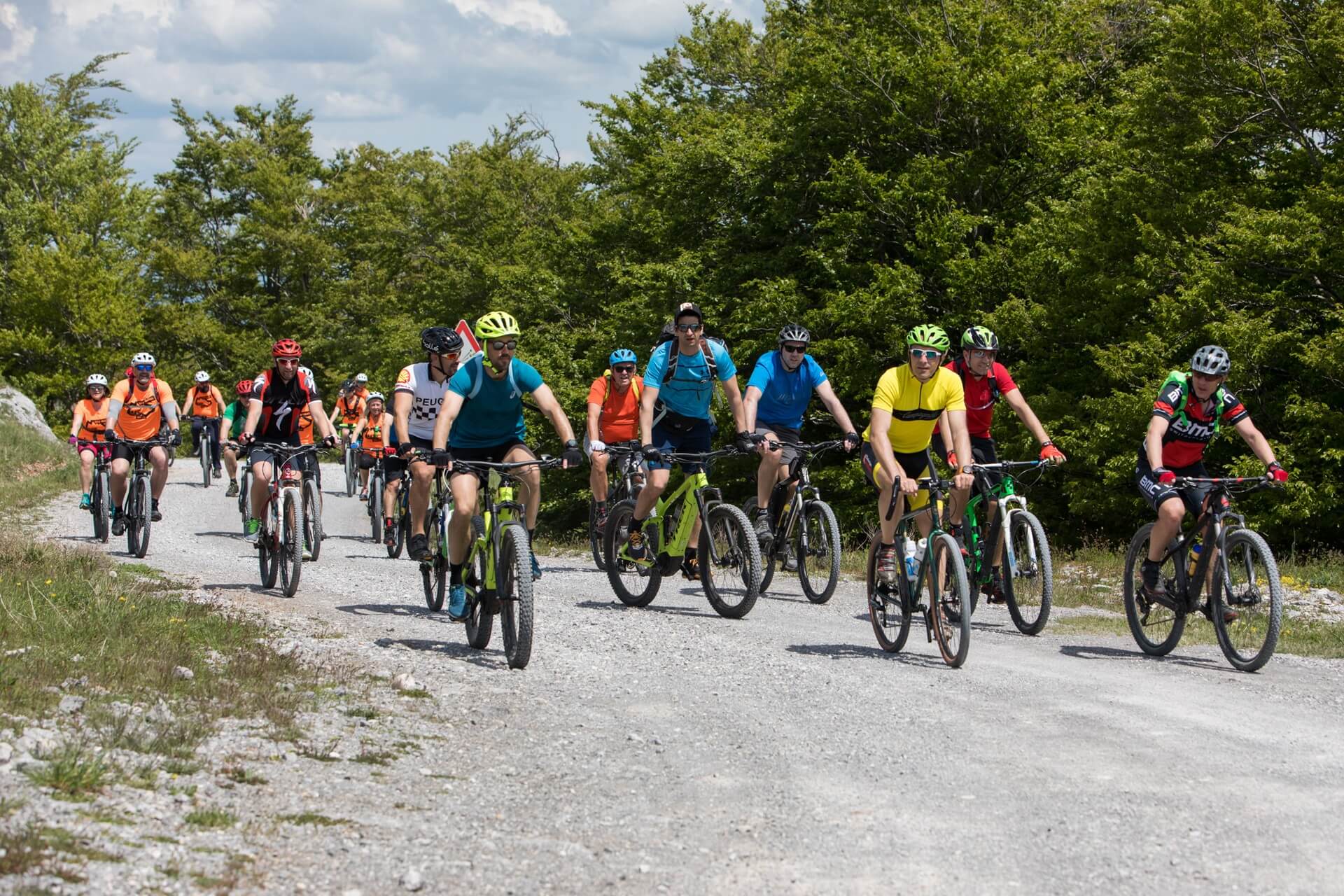
Credit: Heart of Velebit
Tulove Grede - bike & hike is the first route in Saturday's offer of cycling. The lighter version via Mali Alan is 42 kilometers long with 2 and a half hours of ascent and descent from the top, and the more advanced one goes along the Road to Hell route through Male Jasle, 60 kilometers long with 2 and a half hours of ascent and descent from the top. The Heart of Velebit Epic is very heavy, fitness, and technically demanding. Perhaps the most beautiful route in Croatia. It is 62 kilometers long, from 553 to 1211 meters above sea level, and a descent to the starting point. Winnetou - from Lika to the sea, is medium and technically demanding, 37 kilometers long. The reward for the effort is a descent from 1050 meters to the sea, for swimming.
On Saturday, May 29, a special program was prepared to mark the first five successful years of the Heart of Velebit. A celebratory concert of the famous pianist Matej Meštrović (author of the album Sounds of Velebit) will be held for all participants at the Cvituša Excursion Site, with video recording and millennial photography with a camera and drone.
On the last day of the Sveti Rok MTB Tour, on Sunday, May 30, participants can expect Zir - bike & hike, an easy route that everyone can ride, 40 kilometers of Lika fields with springs and rivers, then the Mile vode / River Deep Mountain High, which is a difficult route of 65 kilometers and Mali Epic, a shortened difficult and technically demanding bike route. From the initial 553 meters above sea level, there is an ascent along the Master Road to 1001 meters, then to 1230 meters, followed by a descent along a forest road to 580 meters above sea level, rewarding the cyclists with a road descent to Sveti Rok through the forests and paths of Velebit.
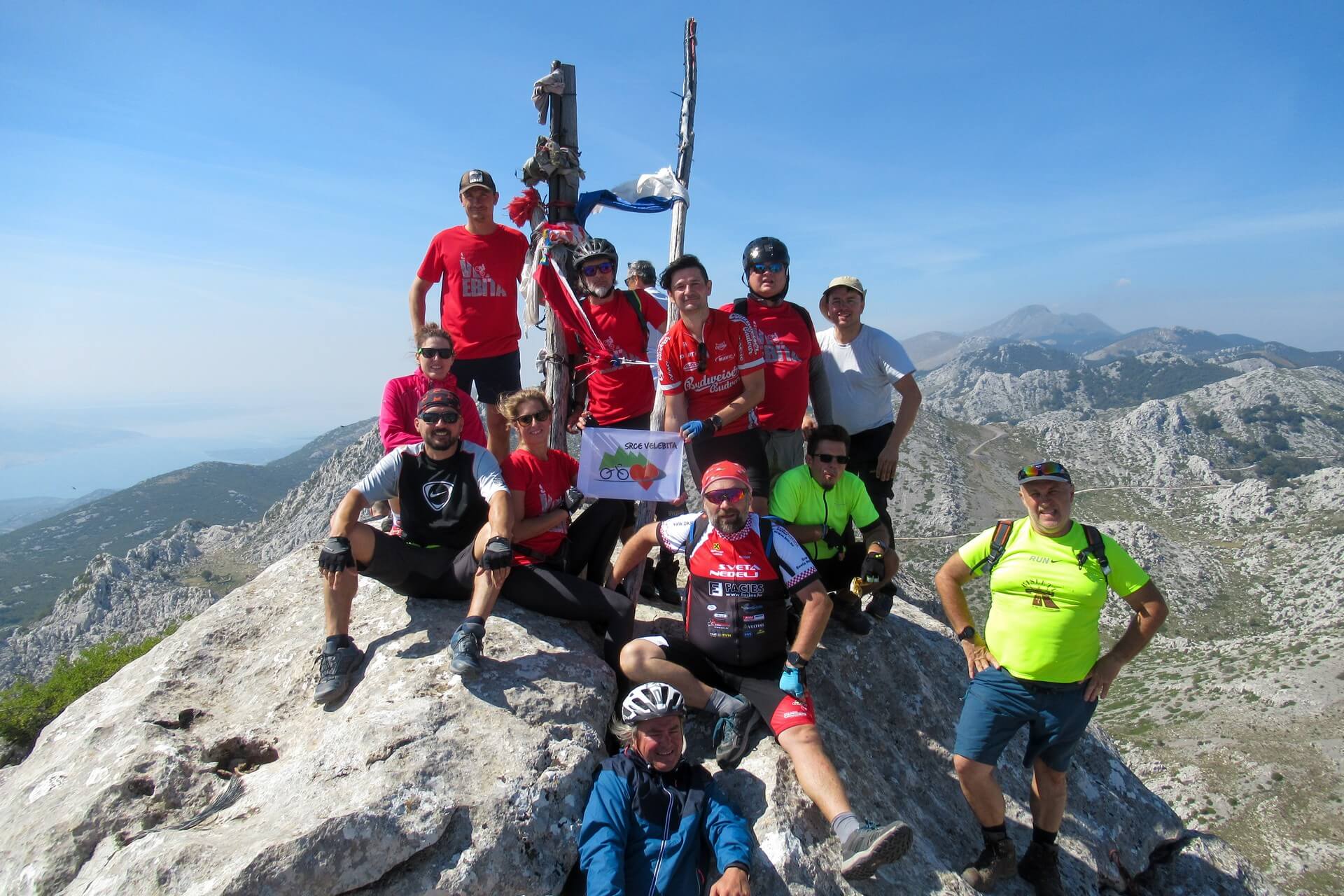
Credit: Heart of Velebit
As part of the cycling race, Lika family farms will also present themselves. In front of Hostel Sveti Rok, there will be a sales exhibition of delicacies and souvenirs before leaving for home.
Those interested can participate for one, two, or all three days. You can find more about the cycling race and how to register HERE.
Velebit Nature Park is one of the 12 natural parks in Croatia, and you can learn more about them in Total Croatia's Guide to National and Natural Parks in Croatia, HERE. Now you can find Total Croatia articles in your language!
For more information about cycling in Croatia, go to Total Croatia's dedicated page.
For more on travel in Croatia, follow TCN's dedicated page.
REPLACE Project from Horizon Europe: Third Primorska-Goranska County Renewable Energy Meeting Held in Rijeka
May 26, 2021 - With Energy Institute Hrvoje Požar (EIHP) being the lead partner, the REPLACE Project from Horizon Europe steadily continues the progress of renewable energy for the Kvarner region.
Earlier in January, TCN wrote about Croatian energy development, whose goal is to be based on clean technologies. And that it's not all empty talk, as shown by the third meeting of a local workgroup enrolled in the REPLACE Project. As Energy Institute Hrvoje Požar (EIHP) reports on its website, the REPLACE Project has a goal of supporting European energetic, climate, environmental, economic, and social goals with the deadline until 2030 and 2050.
As part of the OBZOR 2020 (Horizon Europe) EU program for research and innovations in the 2014-2020 time frame, the REPLACE Project receives EU funding. Twelve partners from nine countries participate in the project, and EIHP is in charge of the project activities in Primorska-Goranska county. In support of European goals, the plan of REPLACE Project is to gradually switch the current ineffective and outdated heating and cooling systems with new efficient systems which rely on renewable energy.
The meeting held at the Faculty of Economics at the University of Rijeka saw Dražen Balić, Antonia Tomas Stanković, and Lea Leopoldović from EIHP hold lectures presenting results of the first period of the project, but also the plans for future activities. The accent was put on implementing campaigns and collective actions supported by the members of the local workgroup. Energetic poverty, gender aspects, and „lock-in effect“ (an economic practice, where a company makes it extremely hard for their customers to leave them, even if the customer wants to) are the obstacles the project runners are aware of and were explained in greater detail. Another thing that stood out in the presentation was the presentation „Technology of Blue Energy in Croatia“, which presented modern technologies used in heating and cooling in coastal areas, and applicable to the Primorska -Goranska county.
Key institutions in the regions such as REA Kvarner (regional energy agency), Energo Rijeka (gas and heat energy provider), representatives of the Primorska-Goranska county, OIE Hrvatska (The economic-interest association The Renewable Energy Sources of Croatia - RES), and Rijeka Consumer Centre were present at the meeting, showing that the motivation to bring energy efficiency in Primorska-Goranska County is in its full strength. Both on corporal, political, and expert levels.
Learn more about Rijeka on our TC page.
For more about science in Croatia, follow TCN's dedicated page.
Volume of Construction Work in March Up 16% Year-Over-Year
ZAGREB, 26 May, 2021 - The volume of construction work in March 2021 was 16% higher than in March 2020, while compared to the previous month, it dropped by 0.4%, show preliminary data from the Croatian Bureau of Statistics.
March was the tenth consecutive month with a year-on-year increase in the volume of construction work.
The volume of construction work on buildings in March this year was 16.5% up from March 2020 while the volume of work on other structures rose 15.3%.
Compared to February 2021, construction work on buildings in March was up 0.5% and on other structures it was 3.9% higher.
For more about business in Croatia, follow TCN's dedicated page


